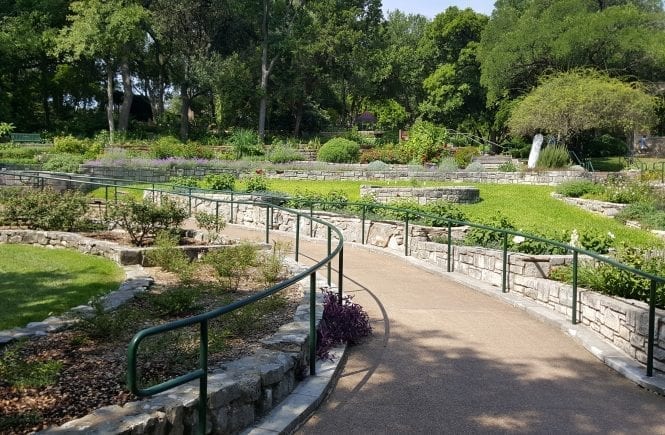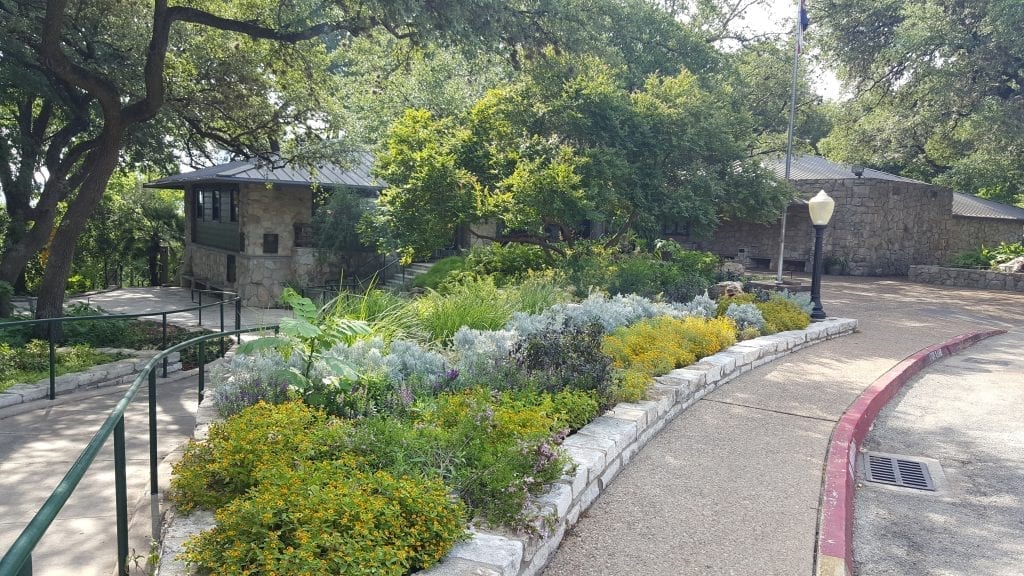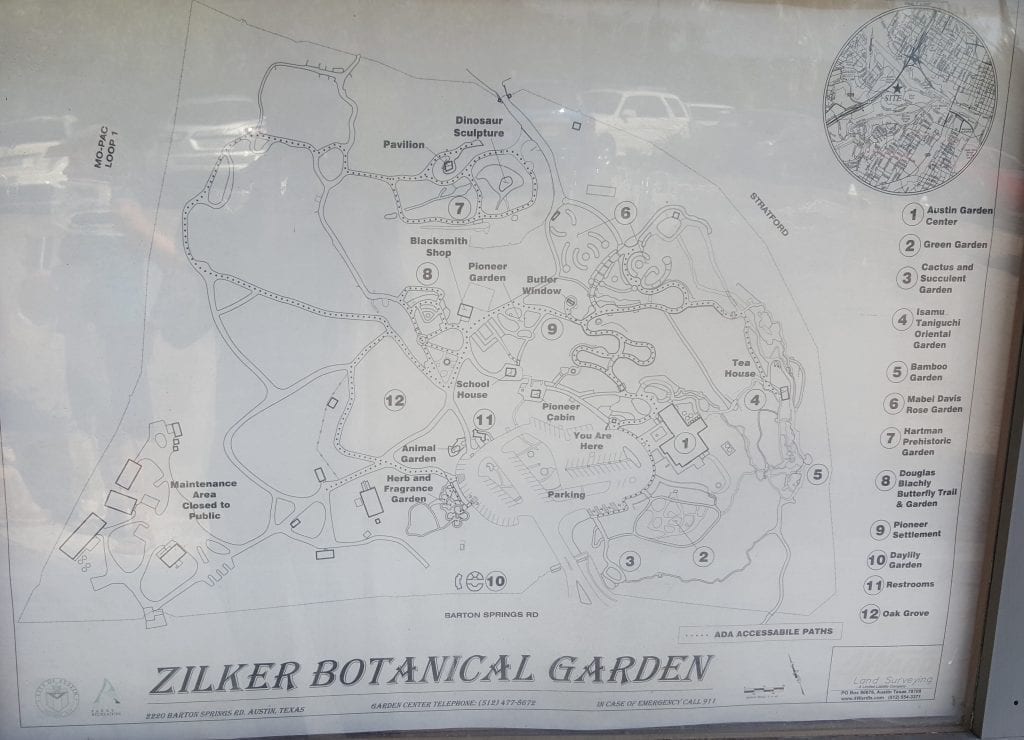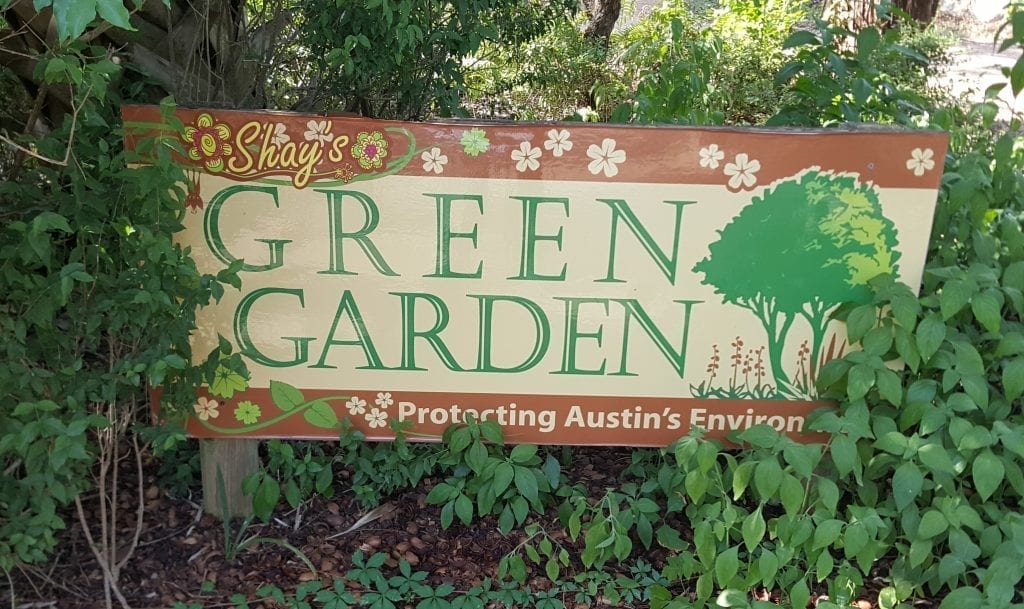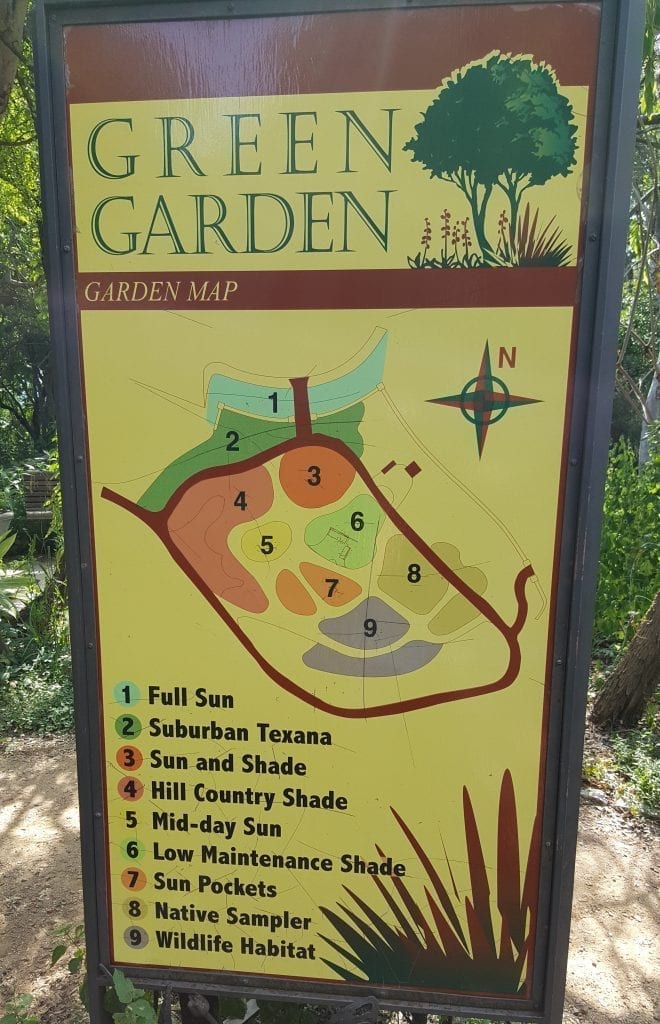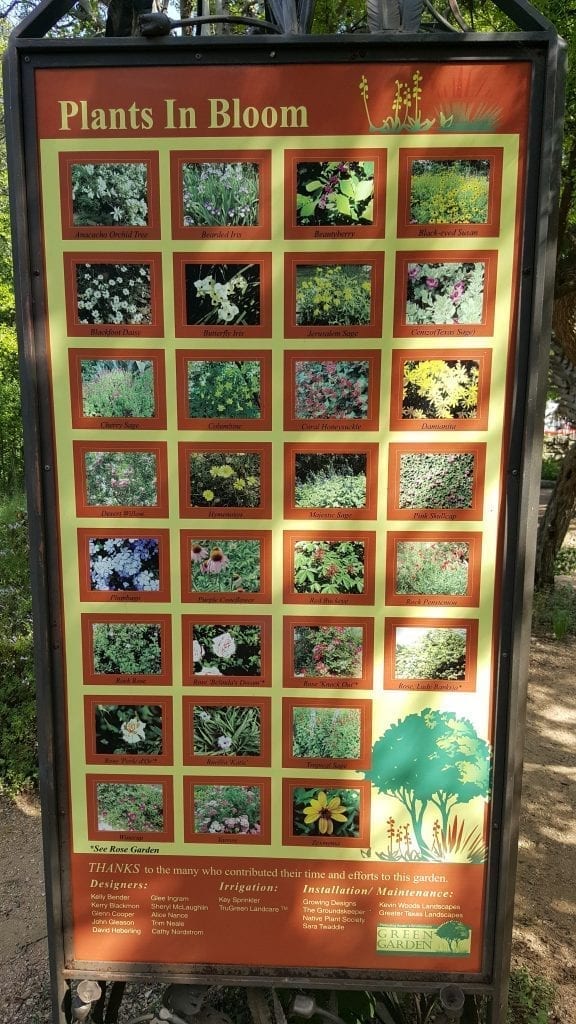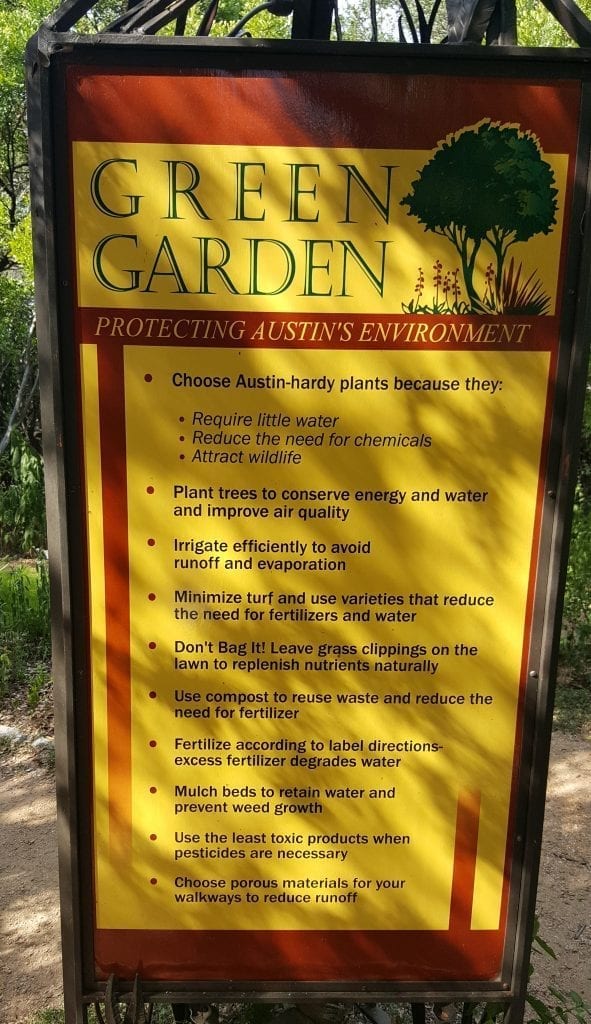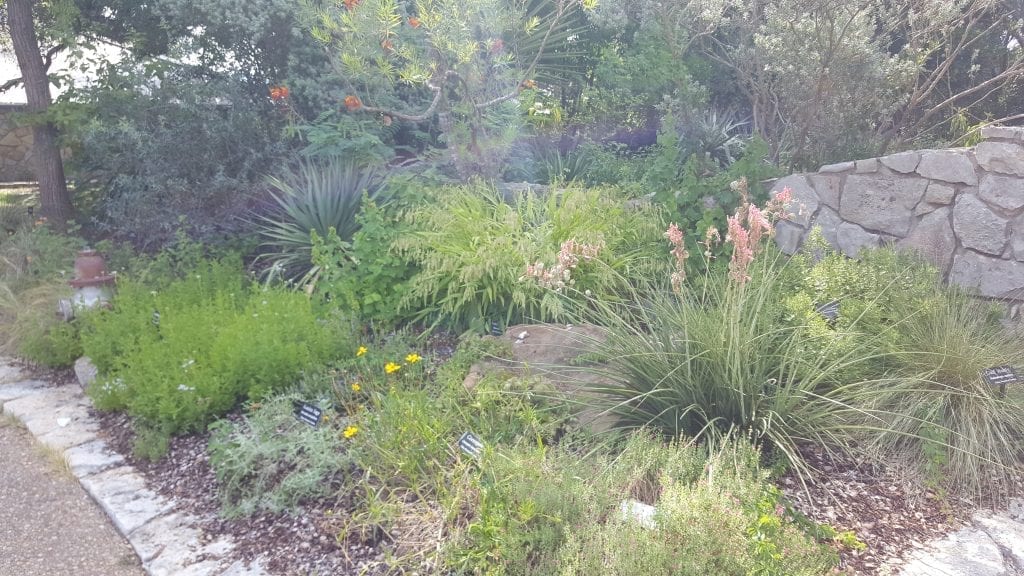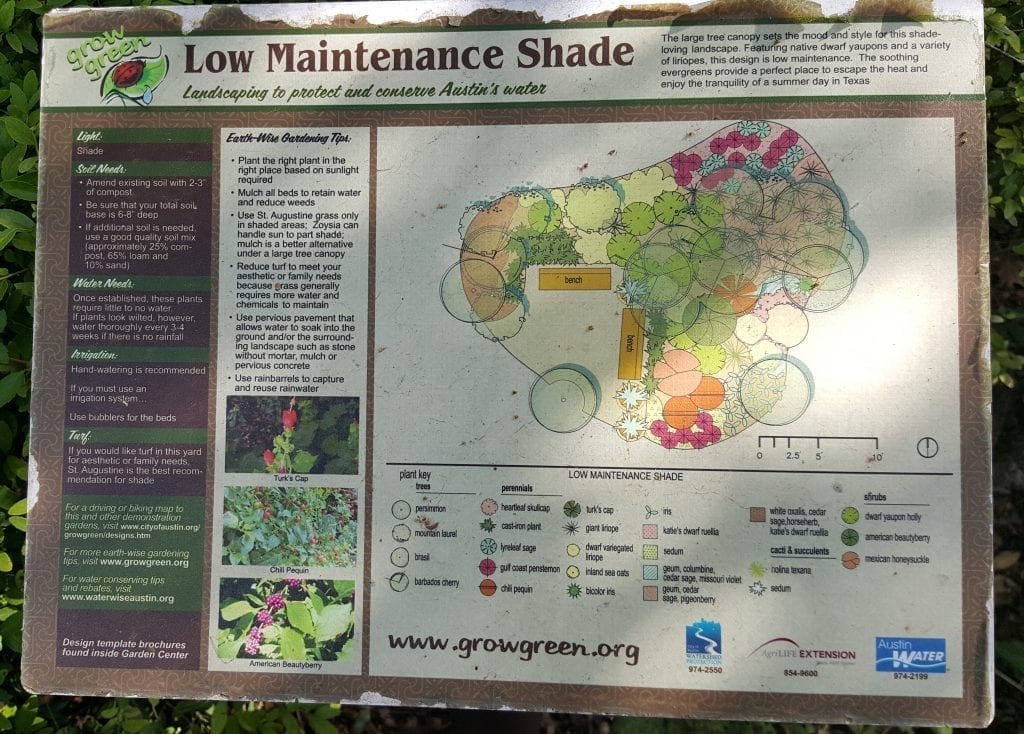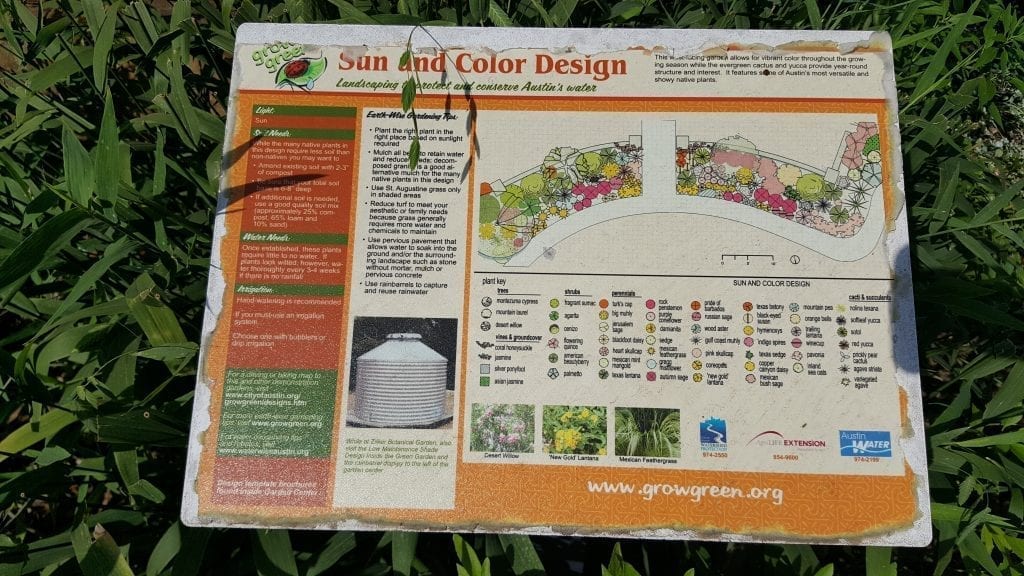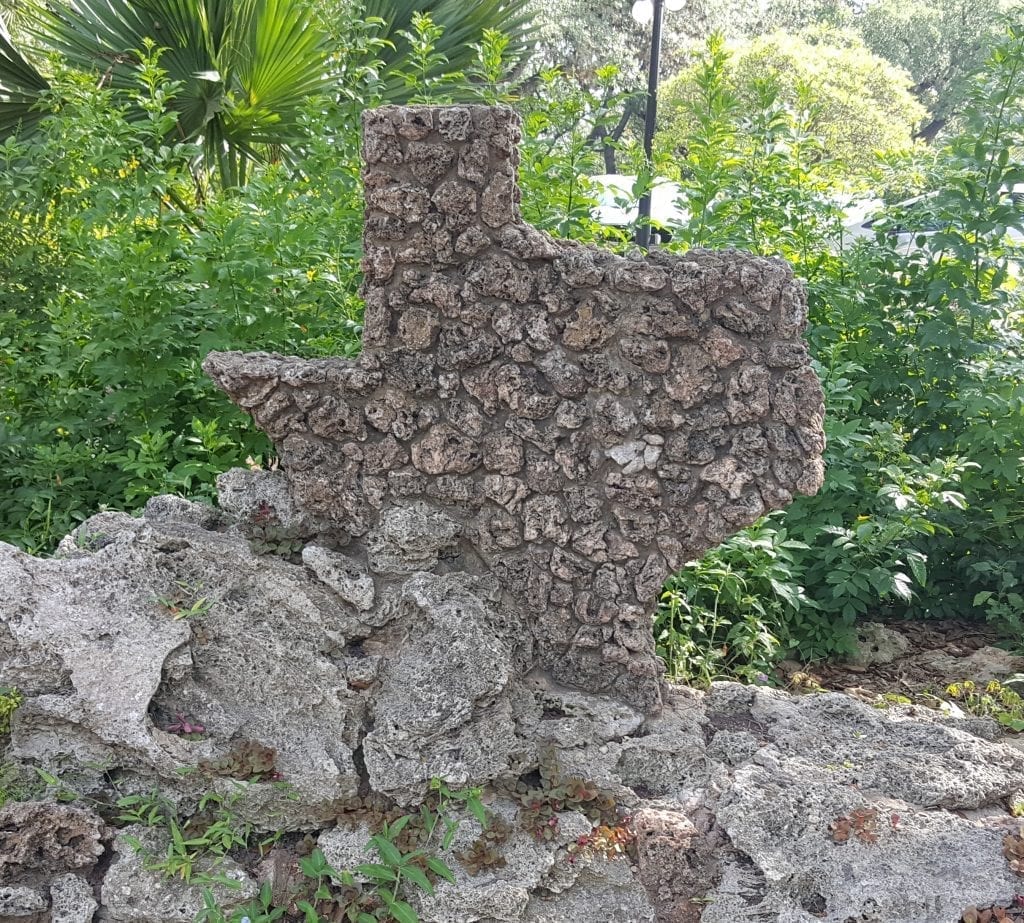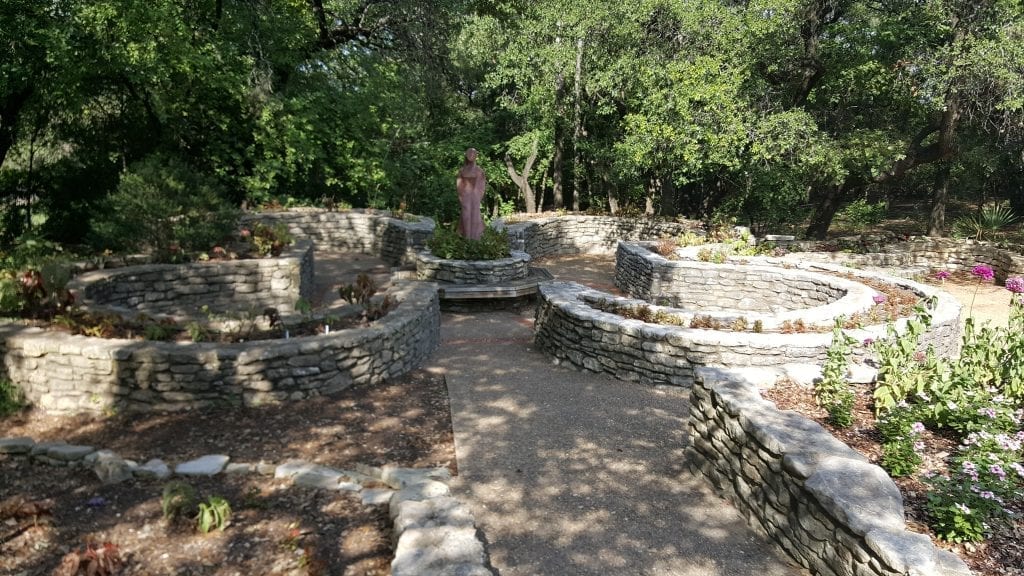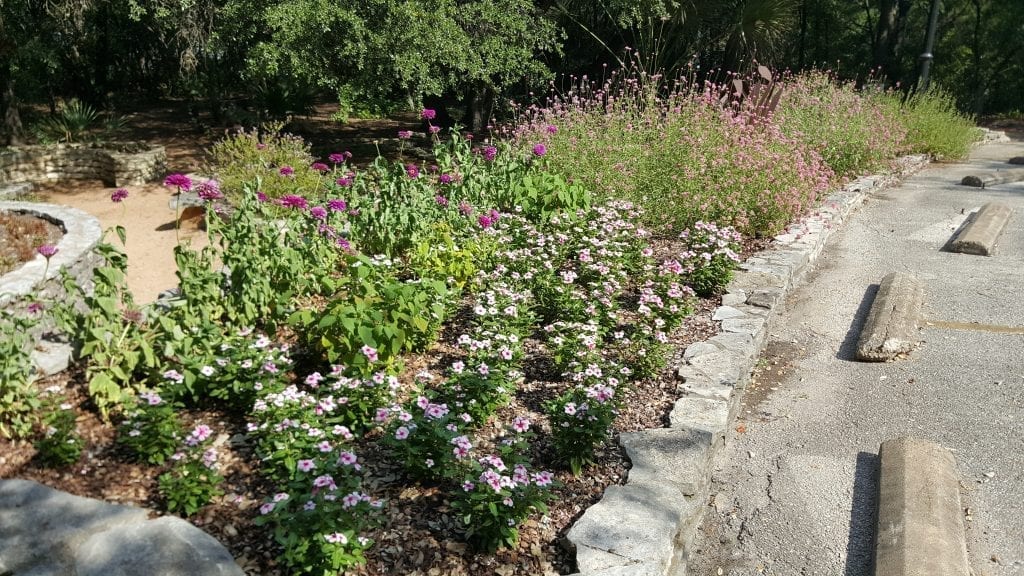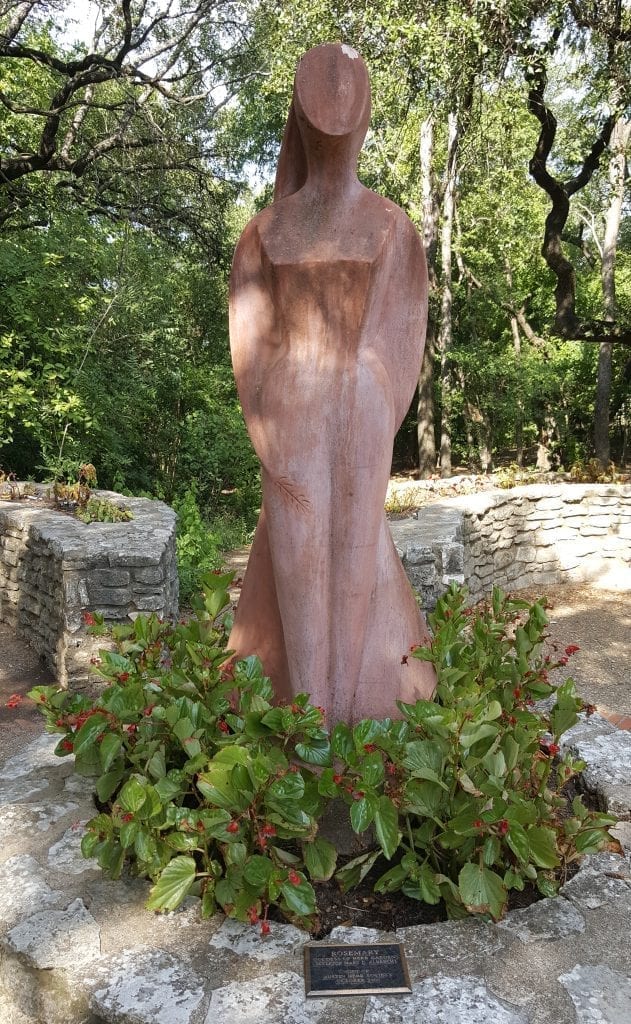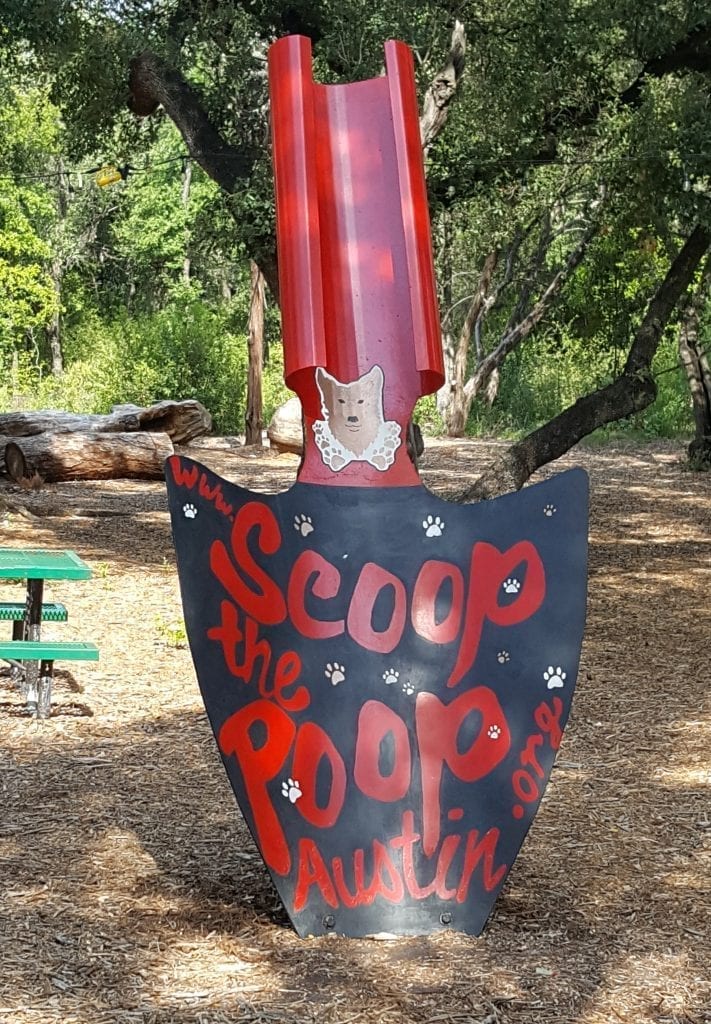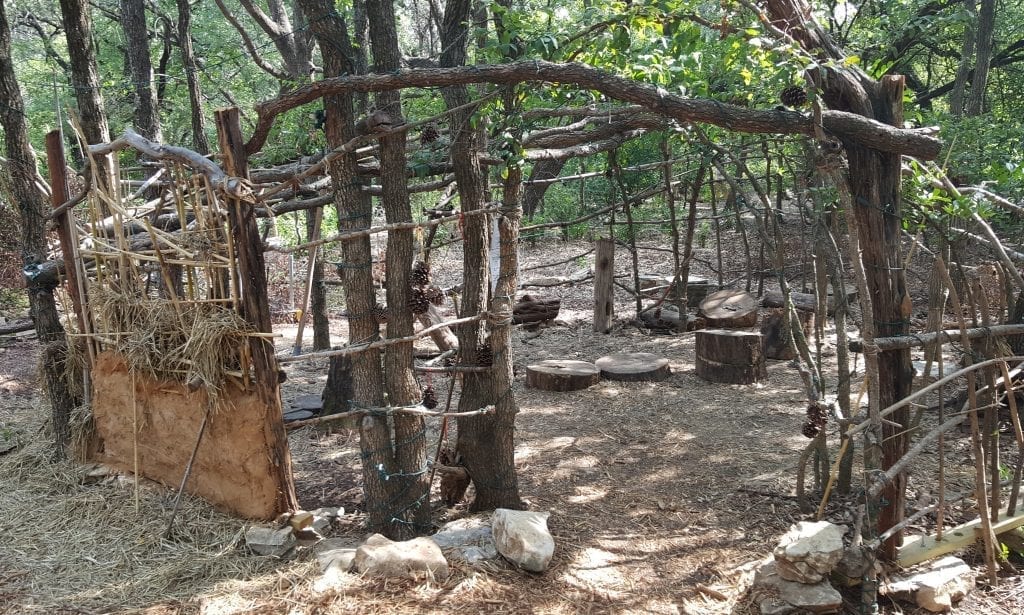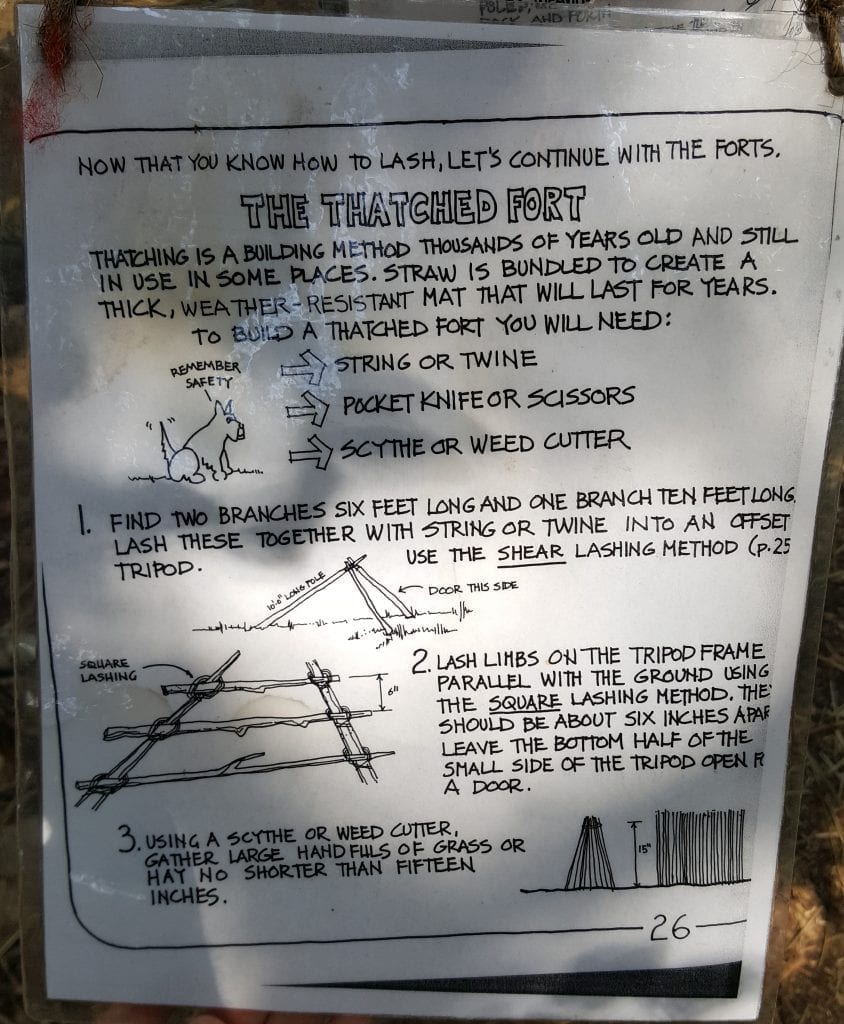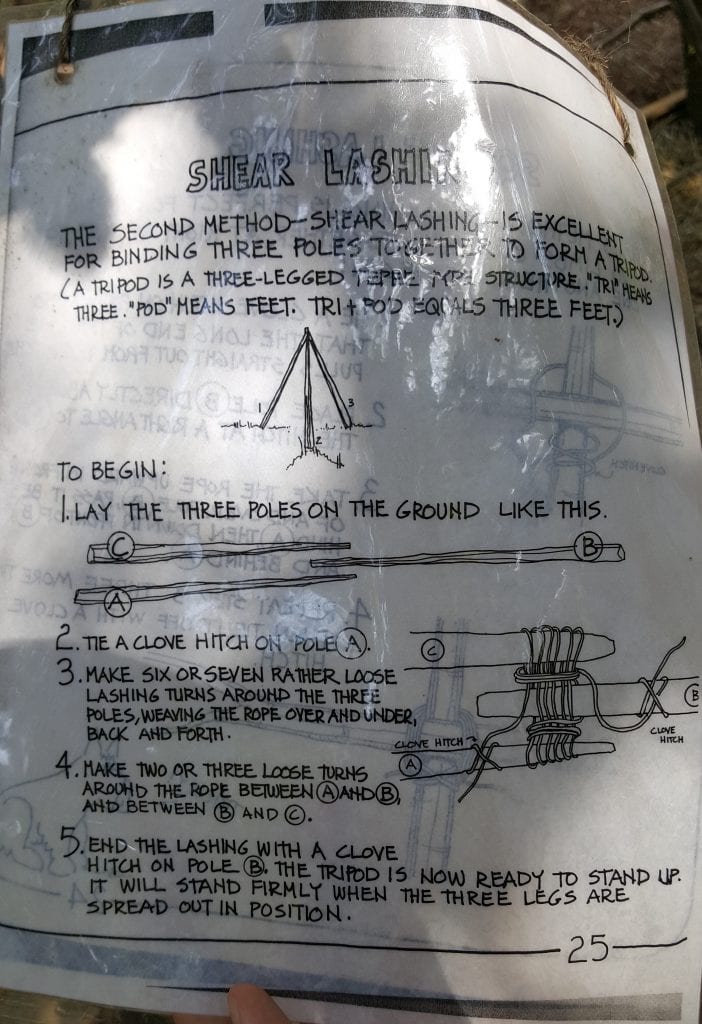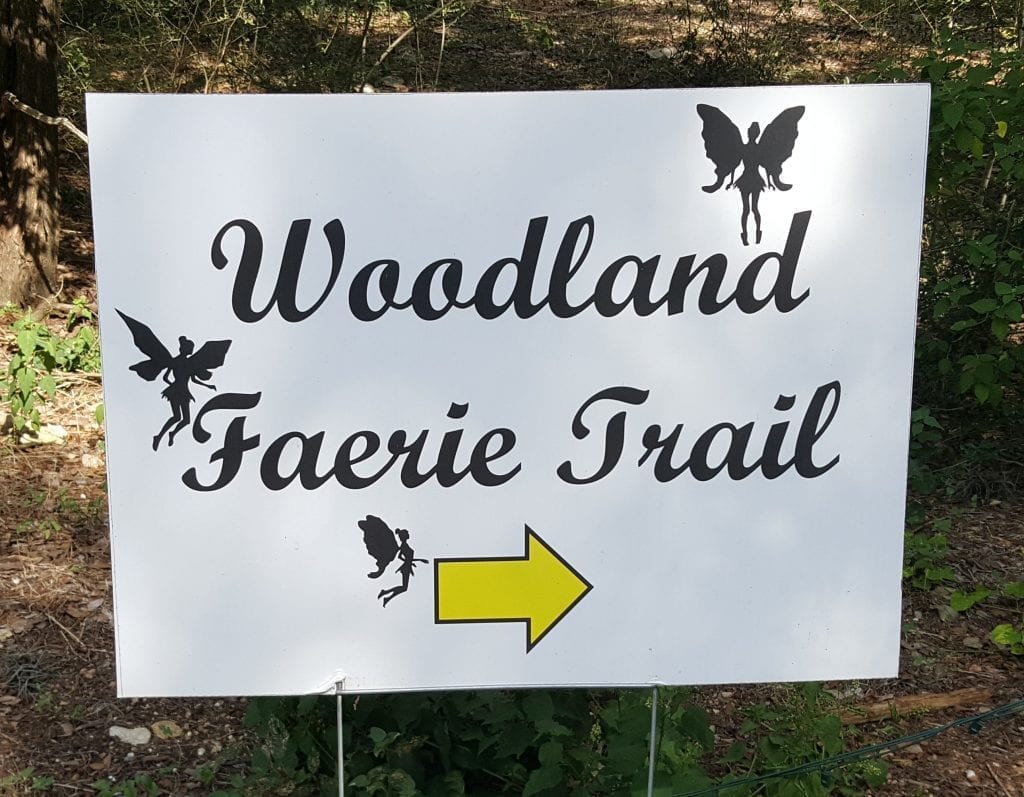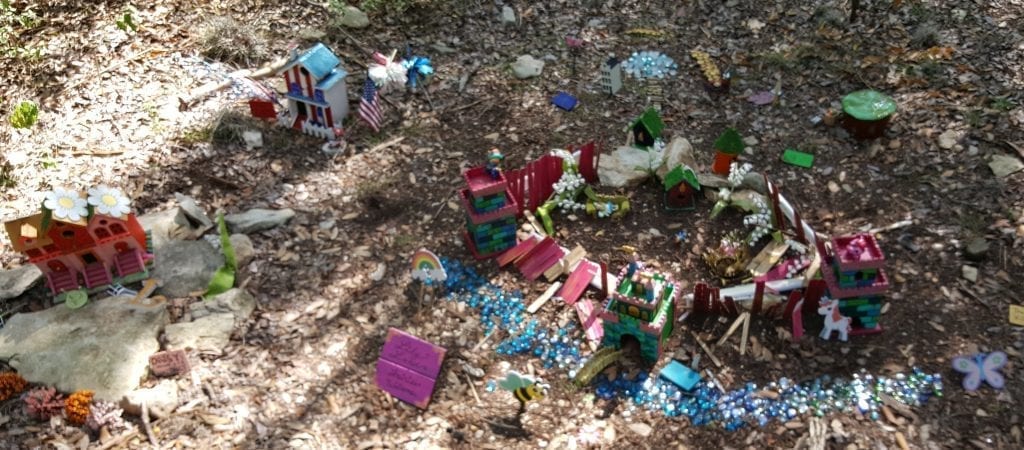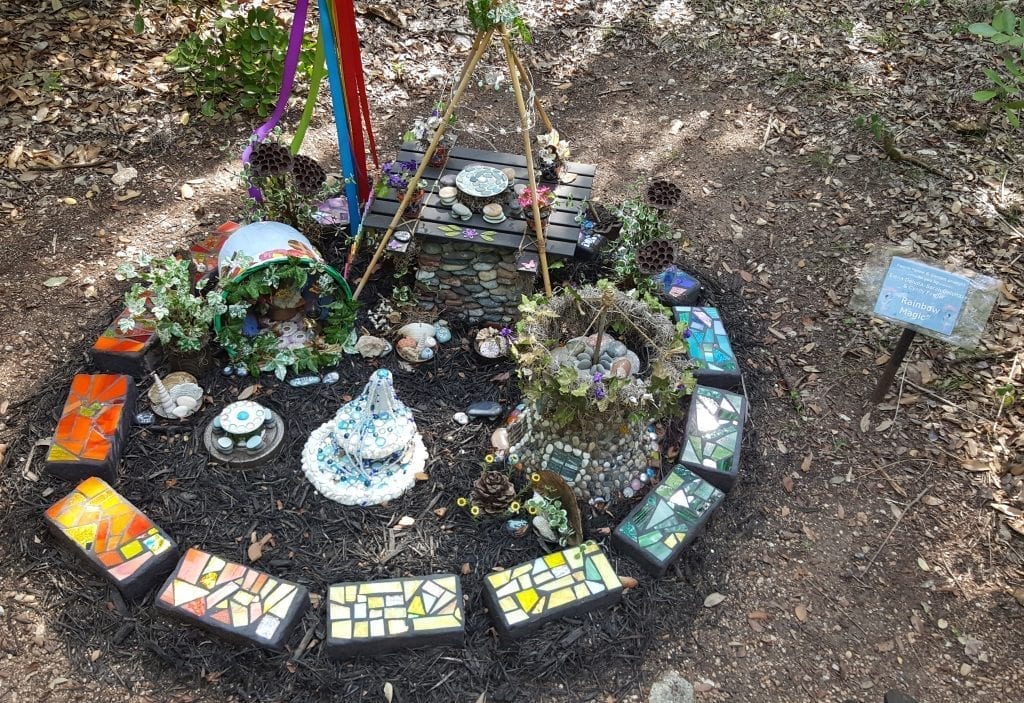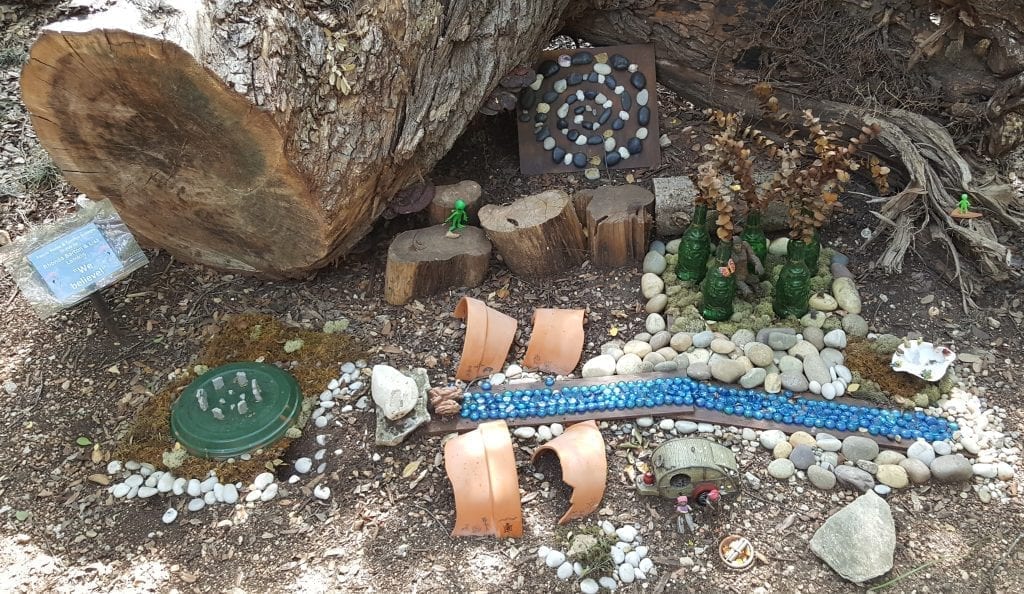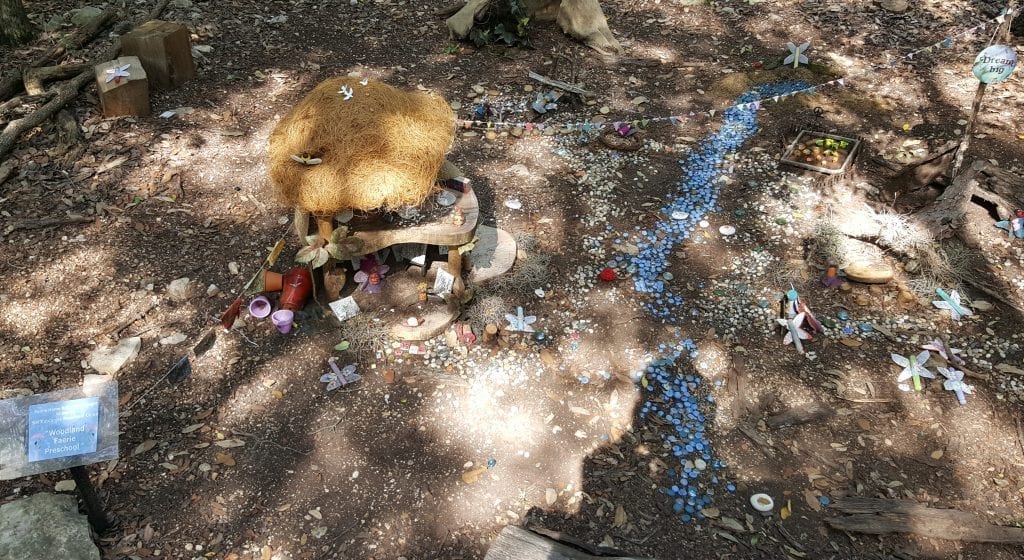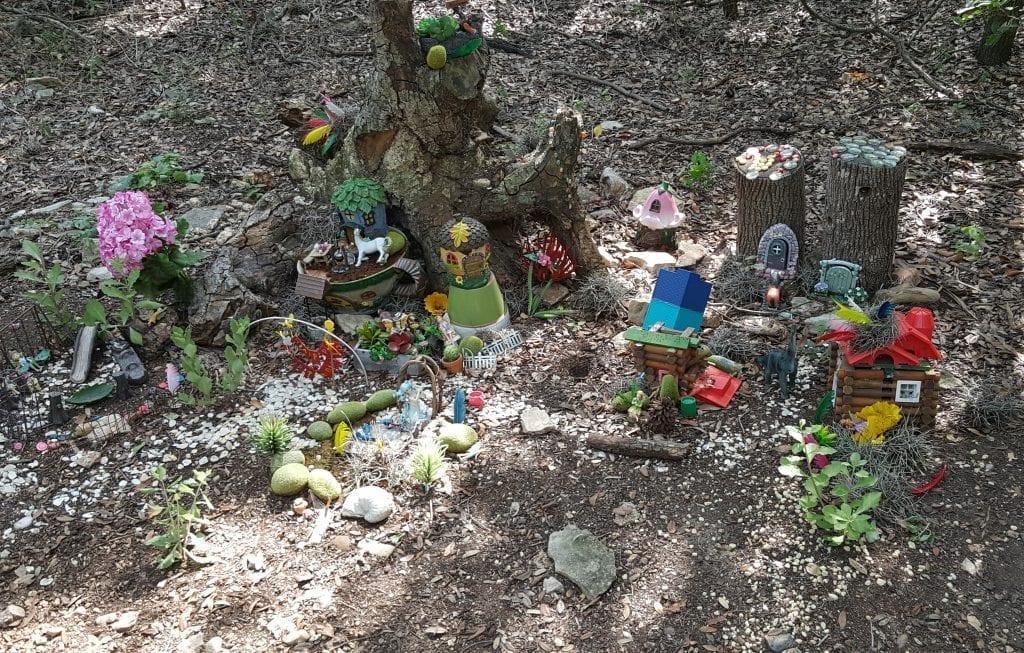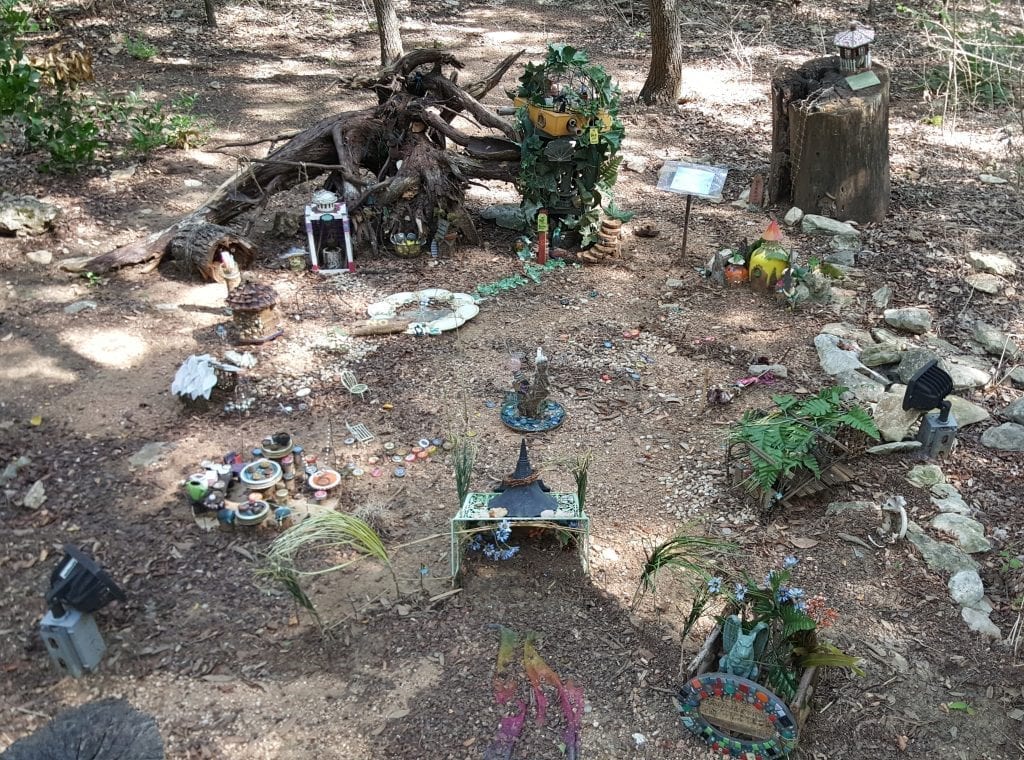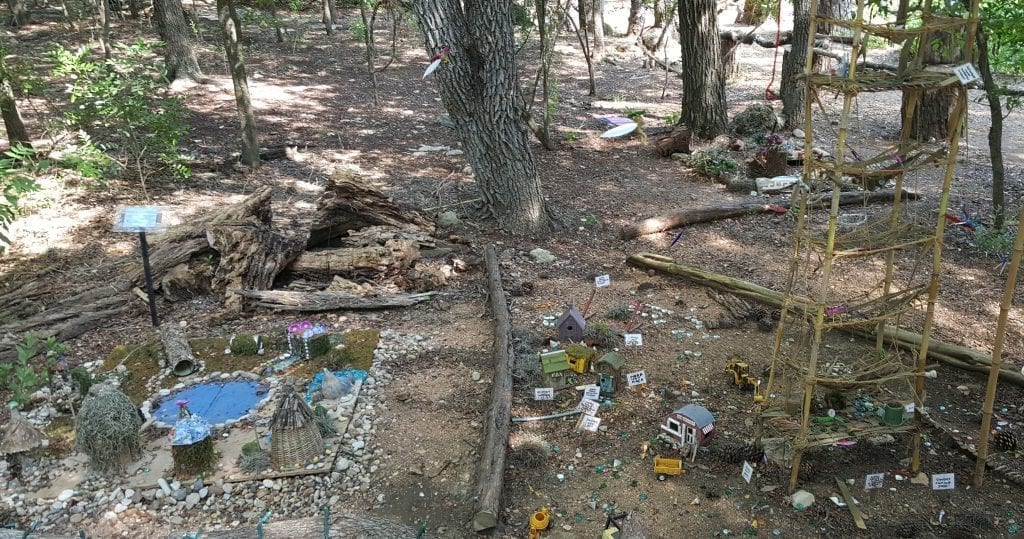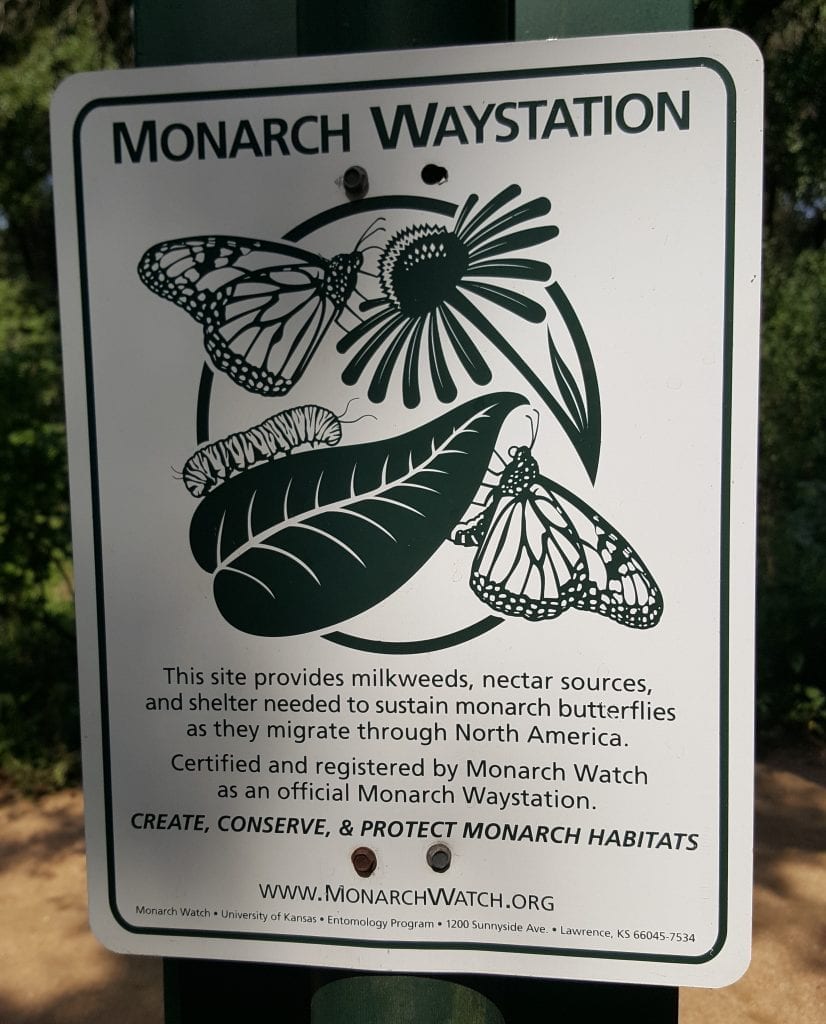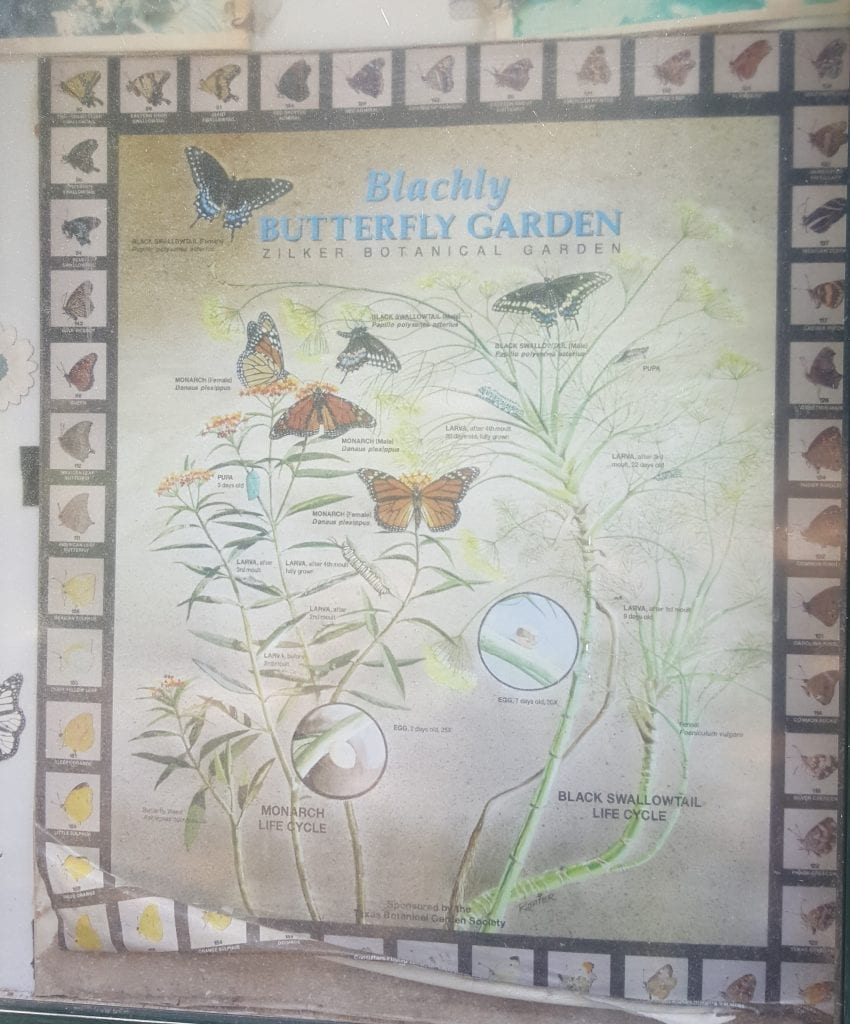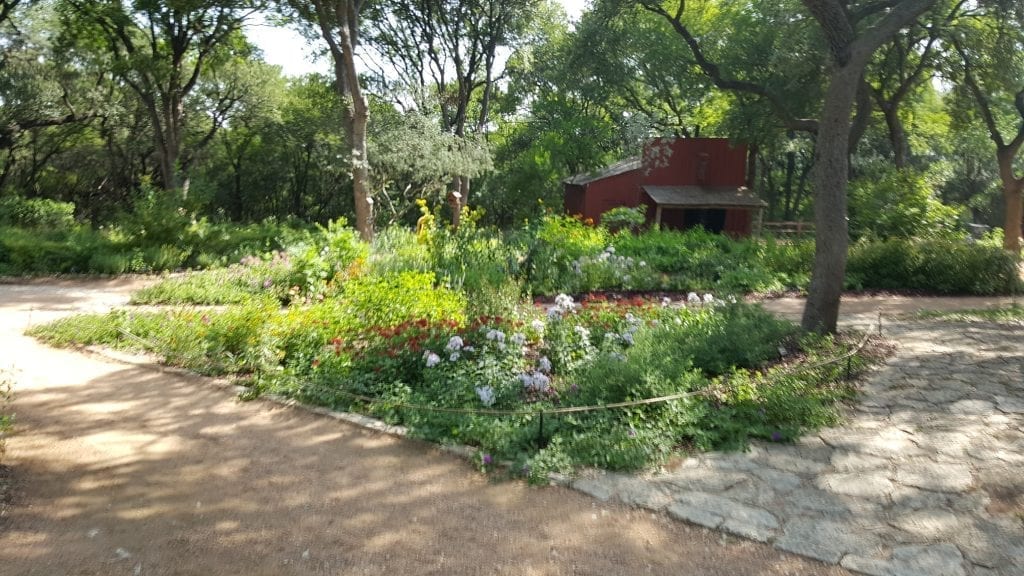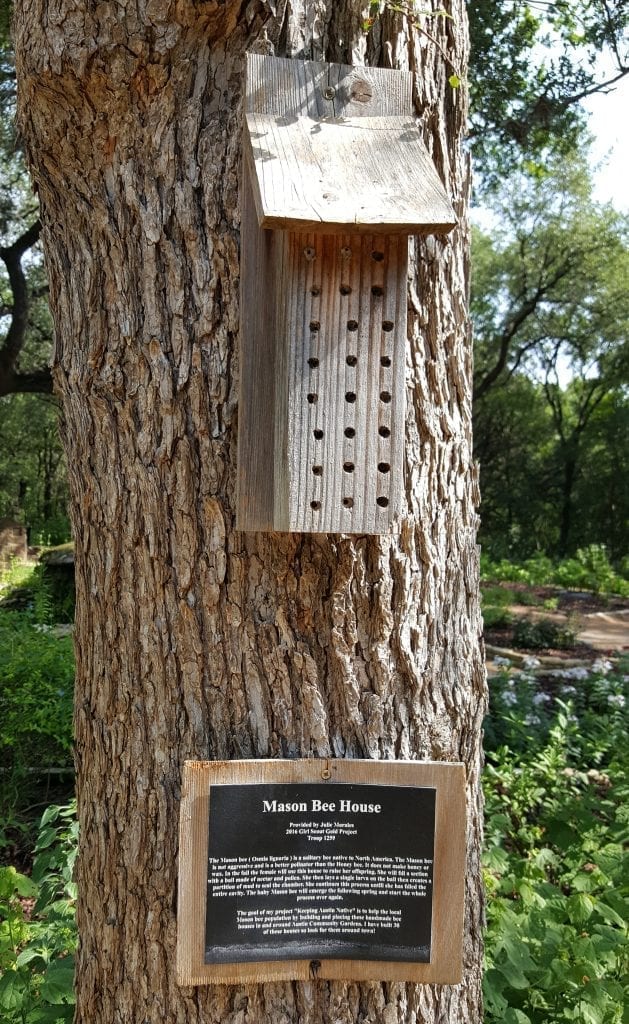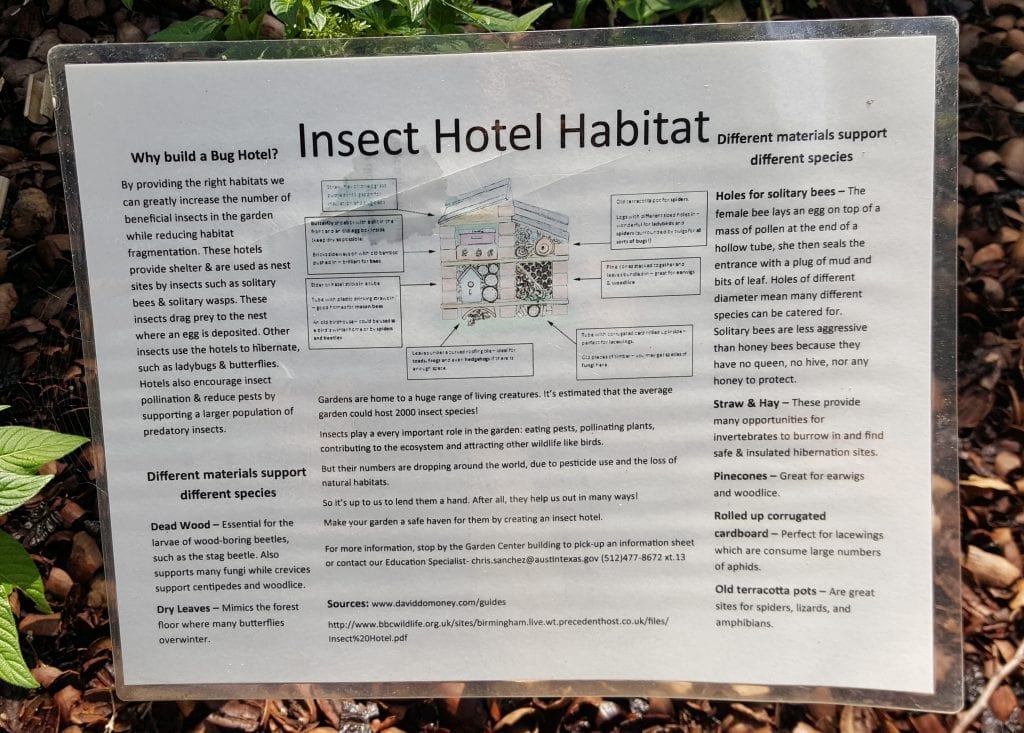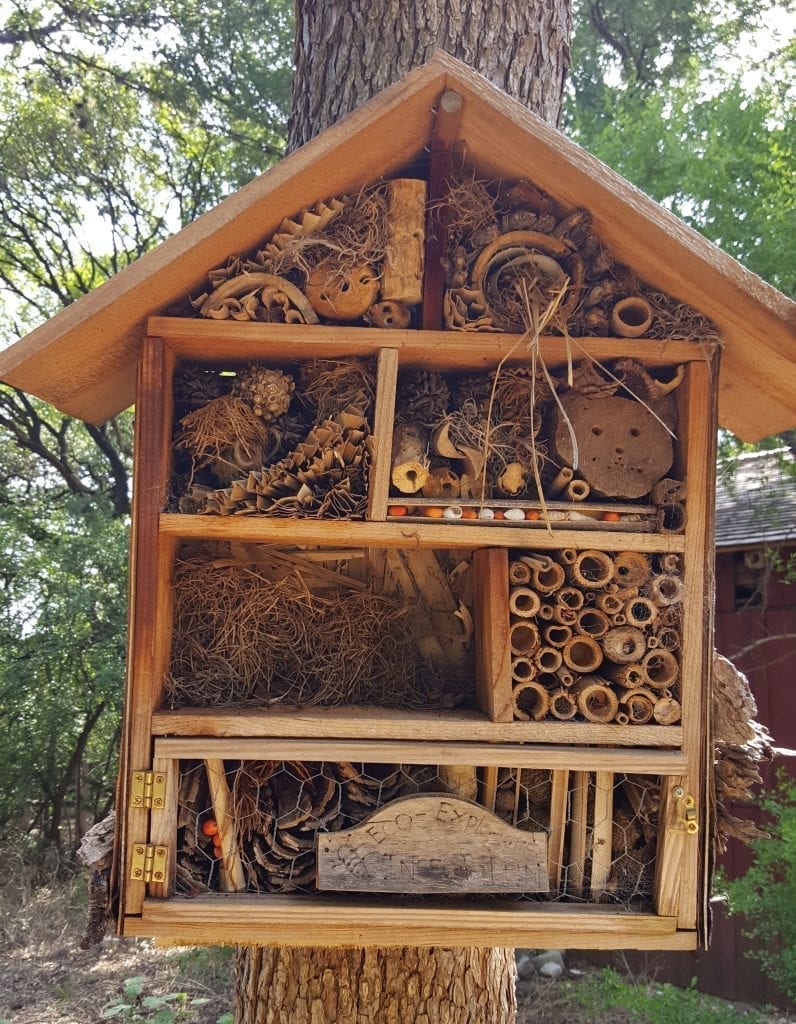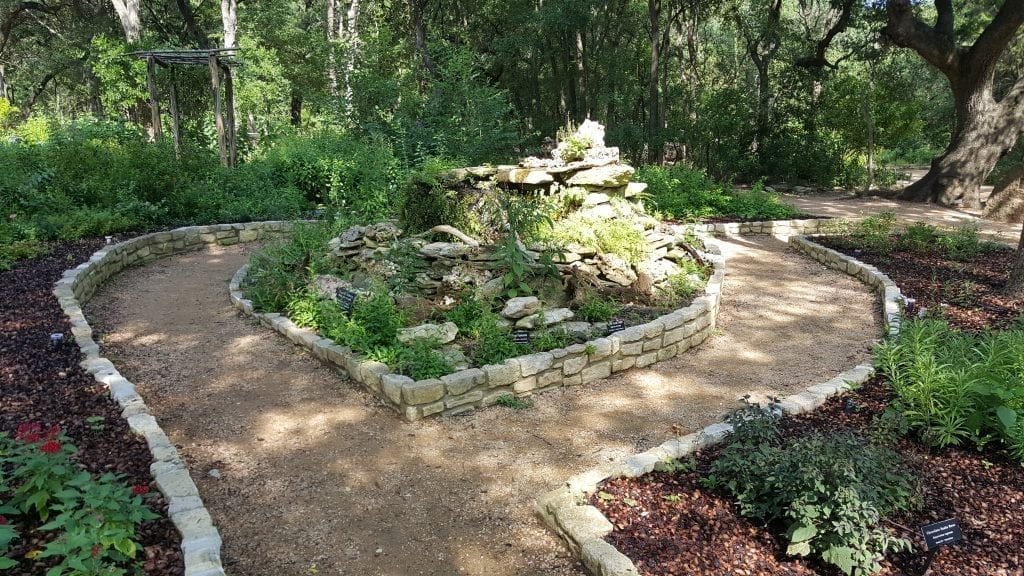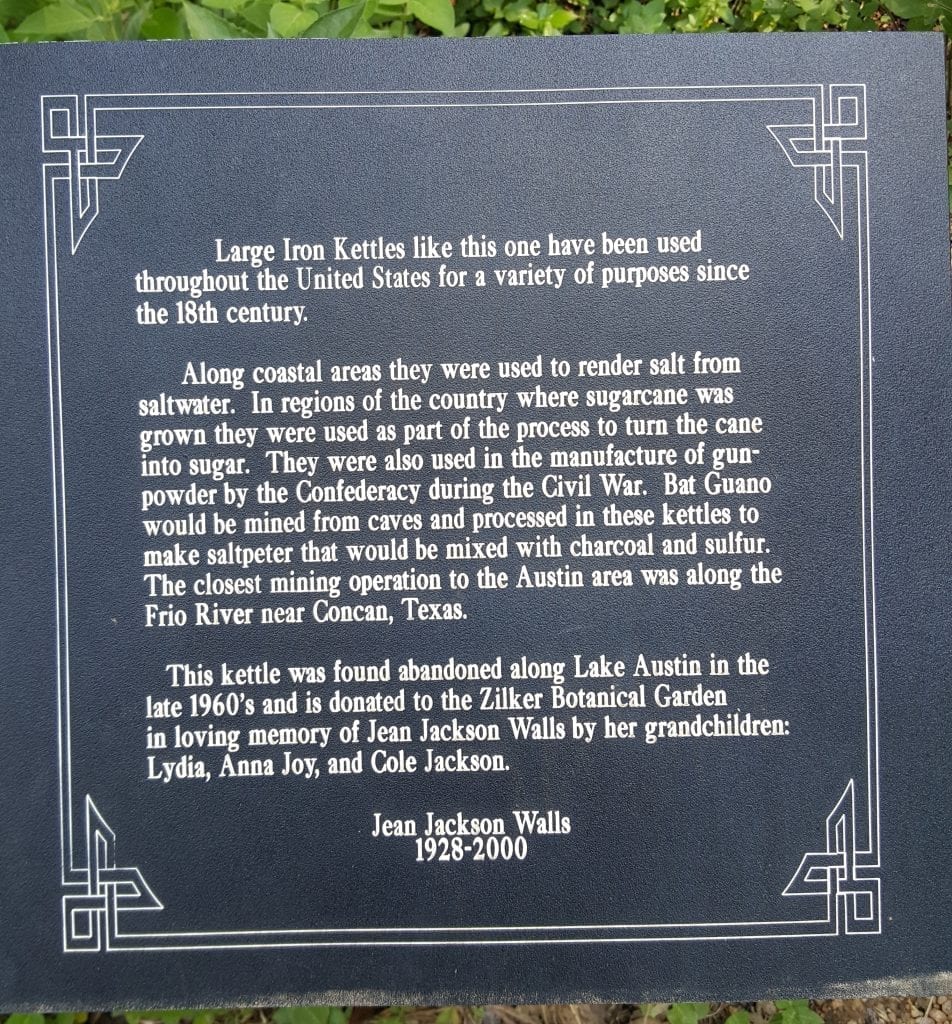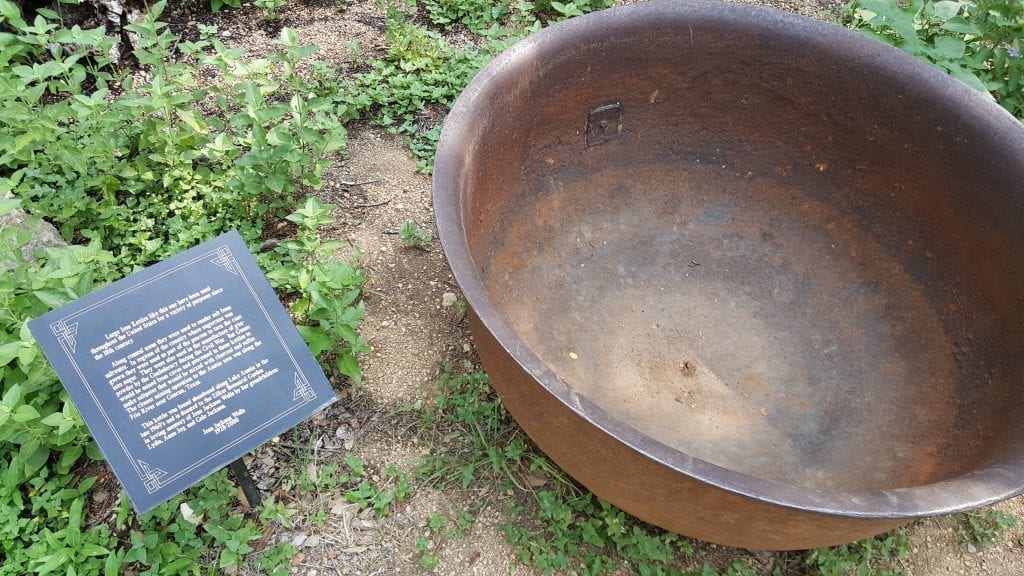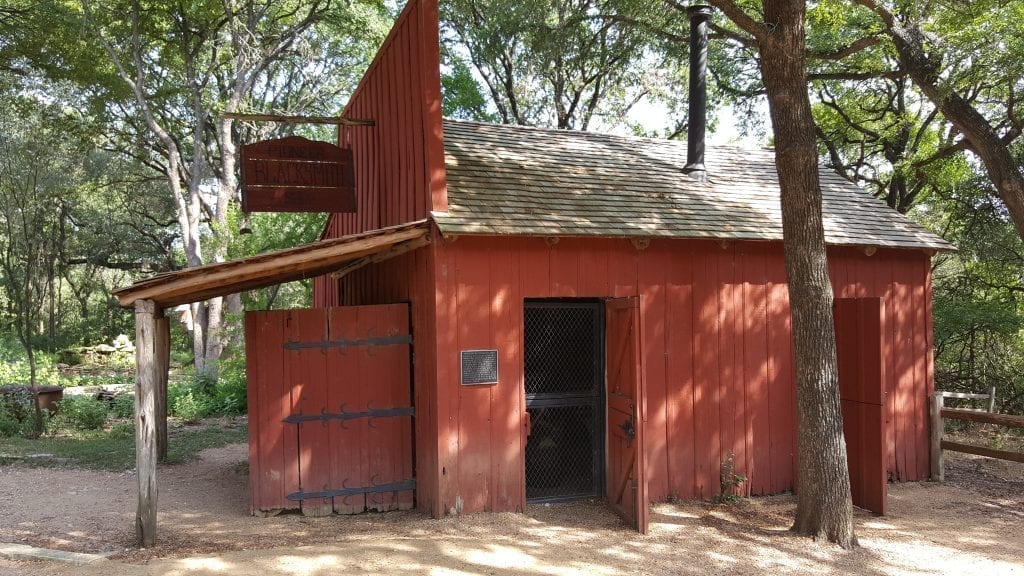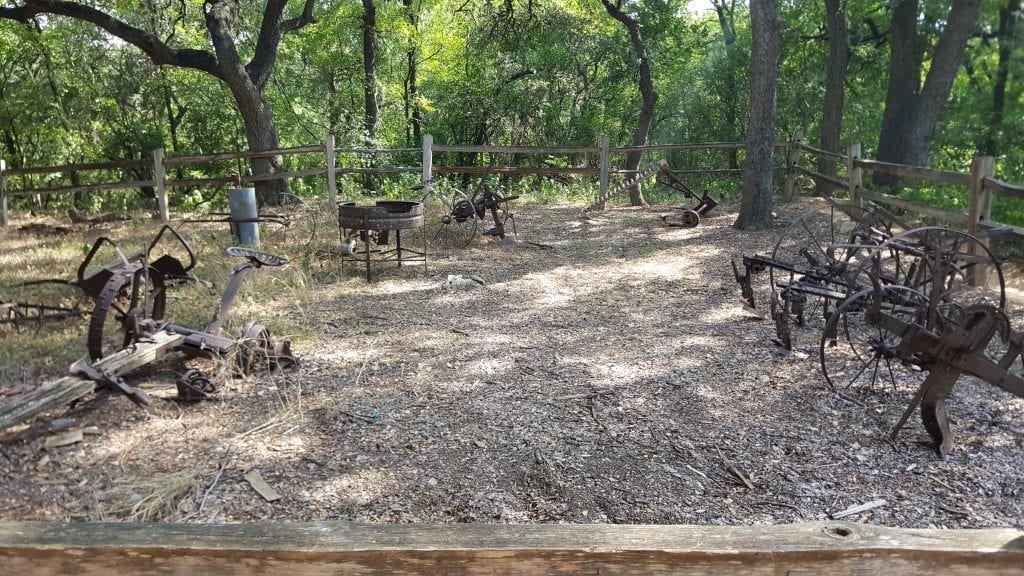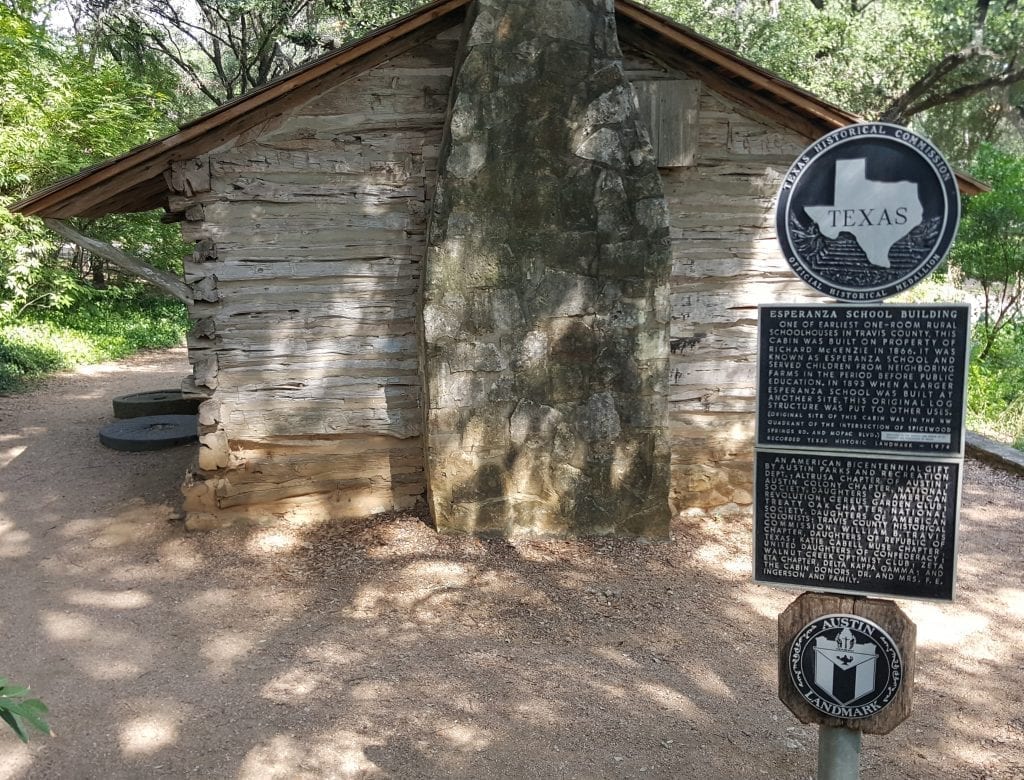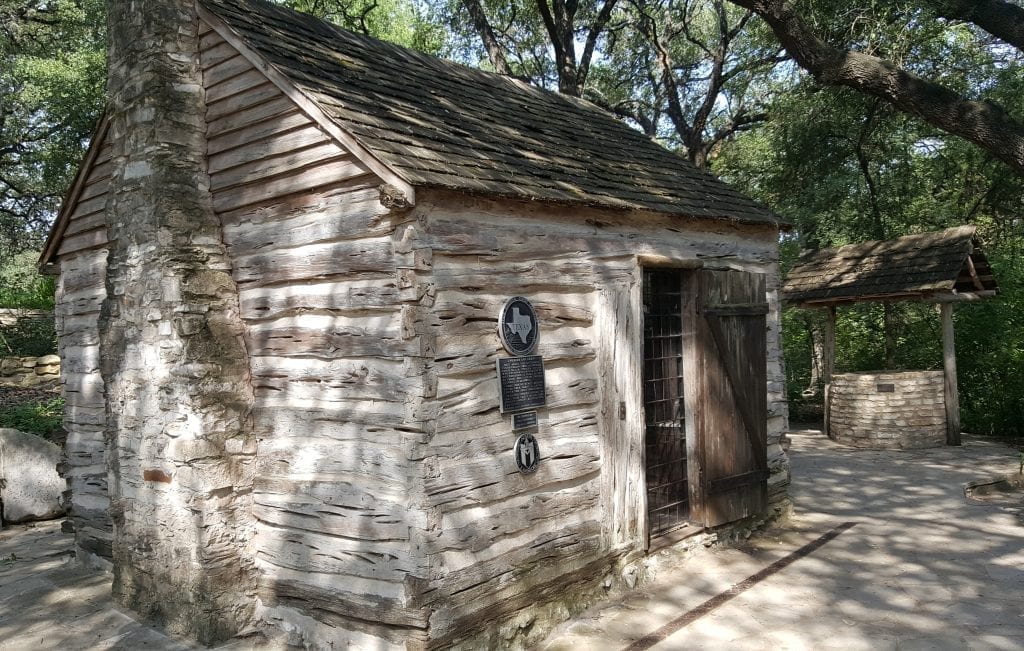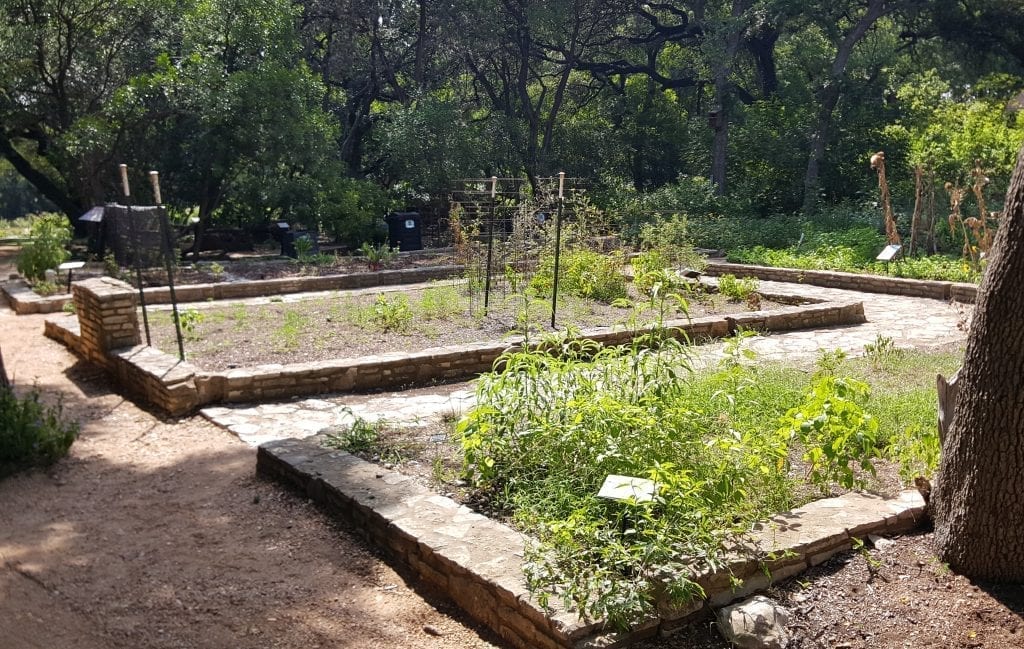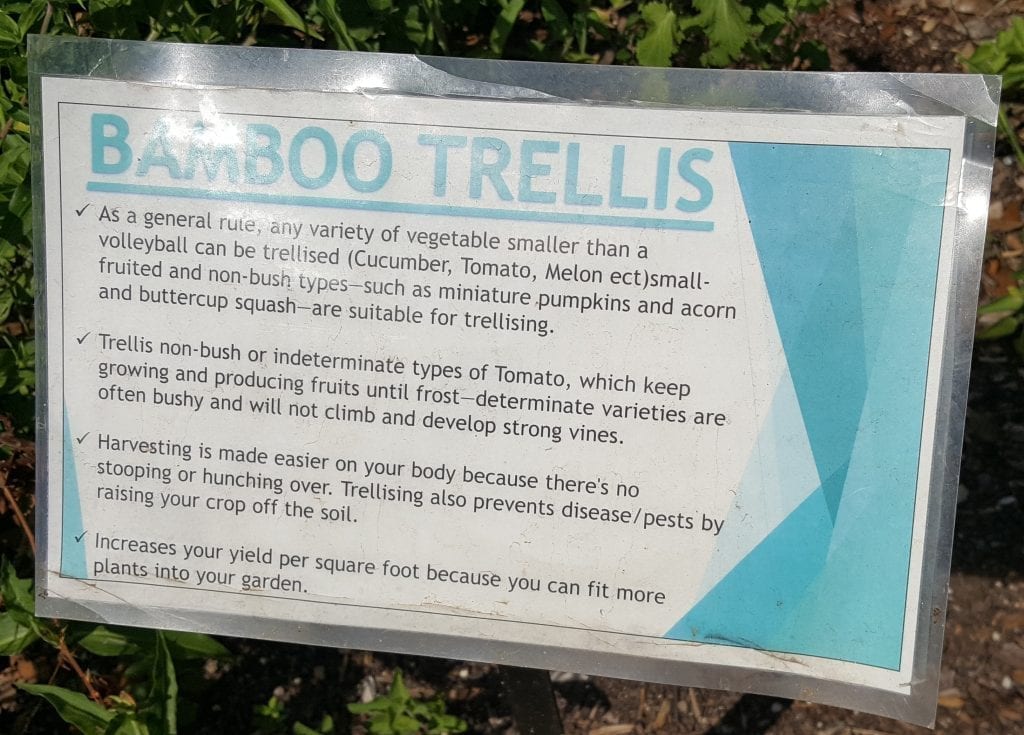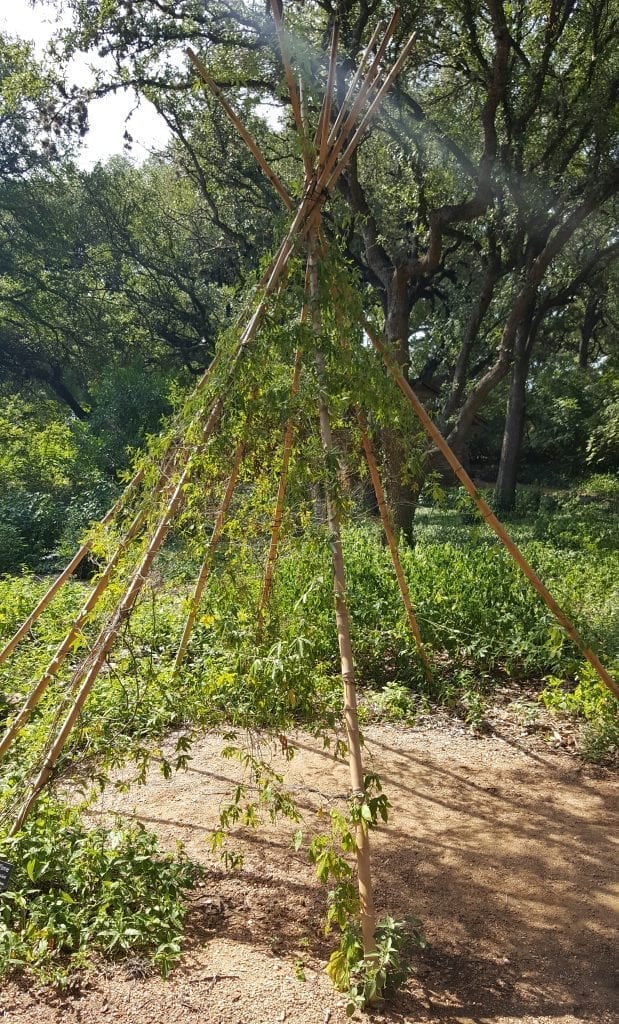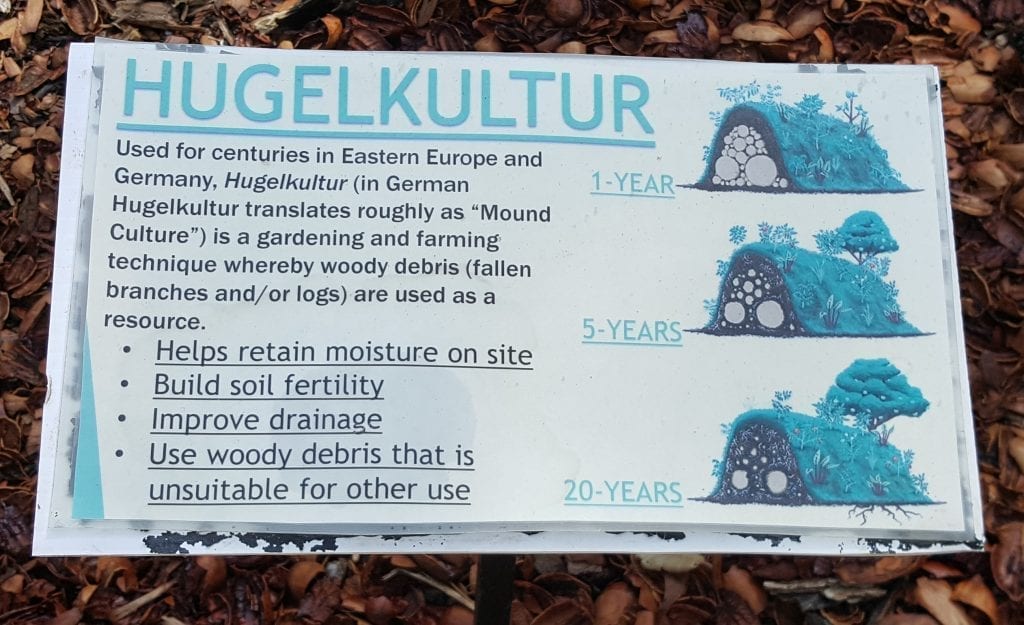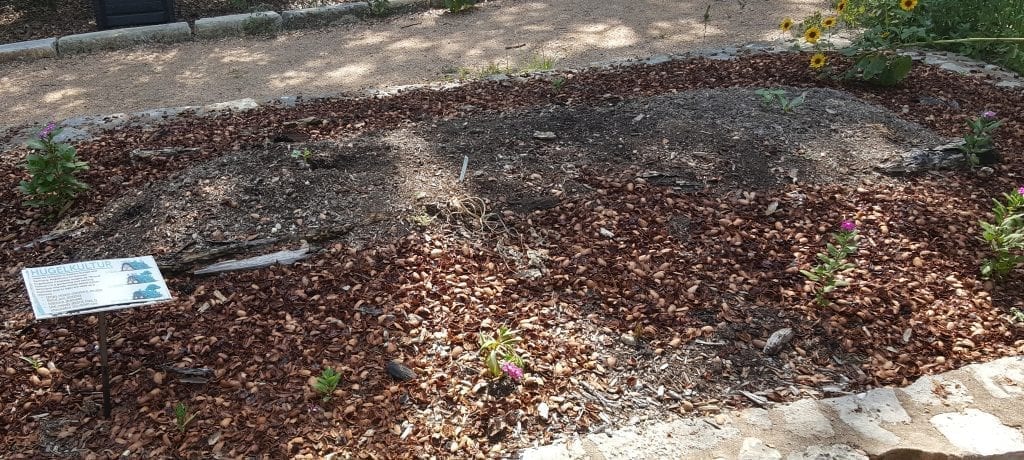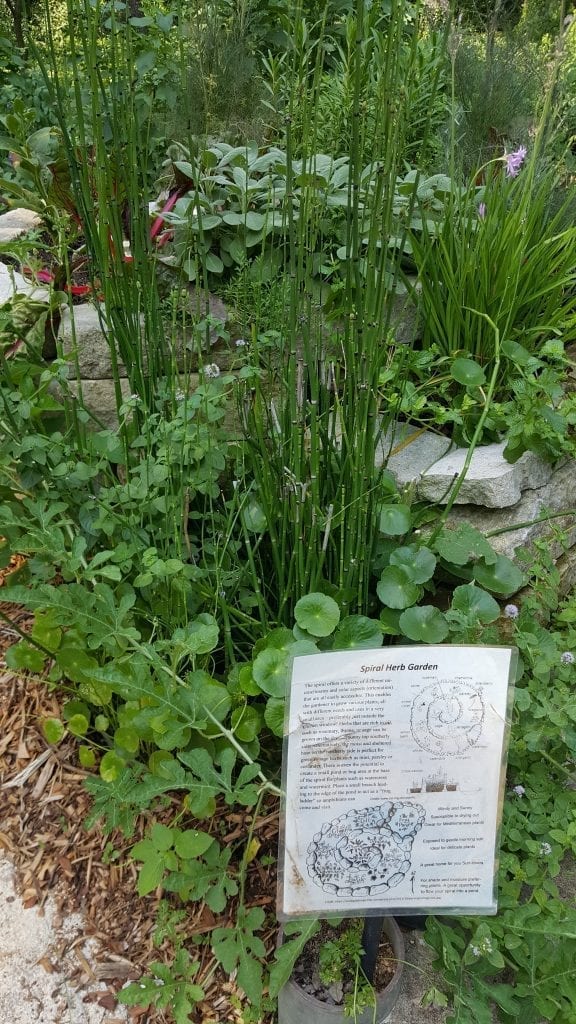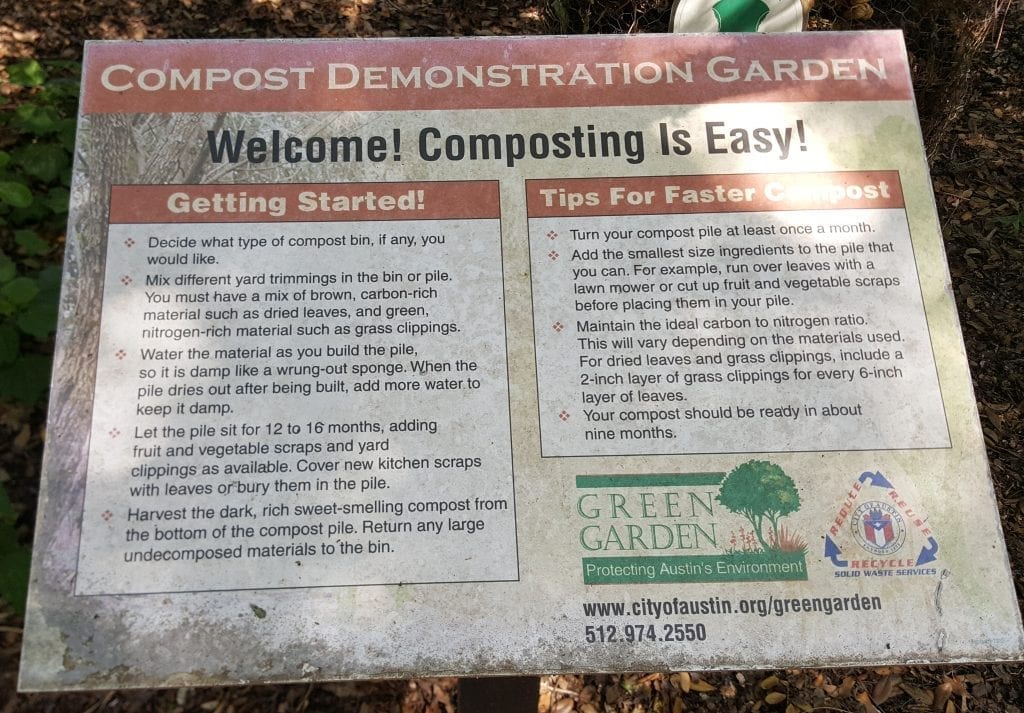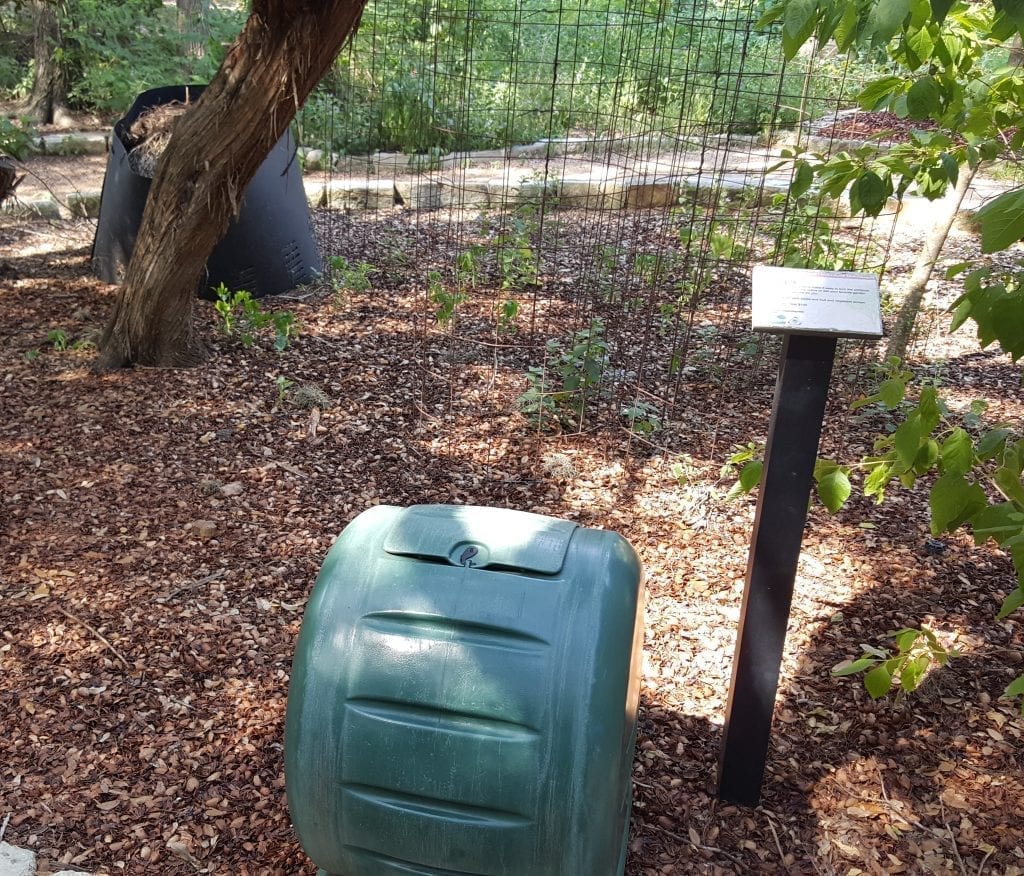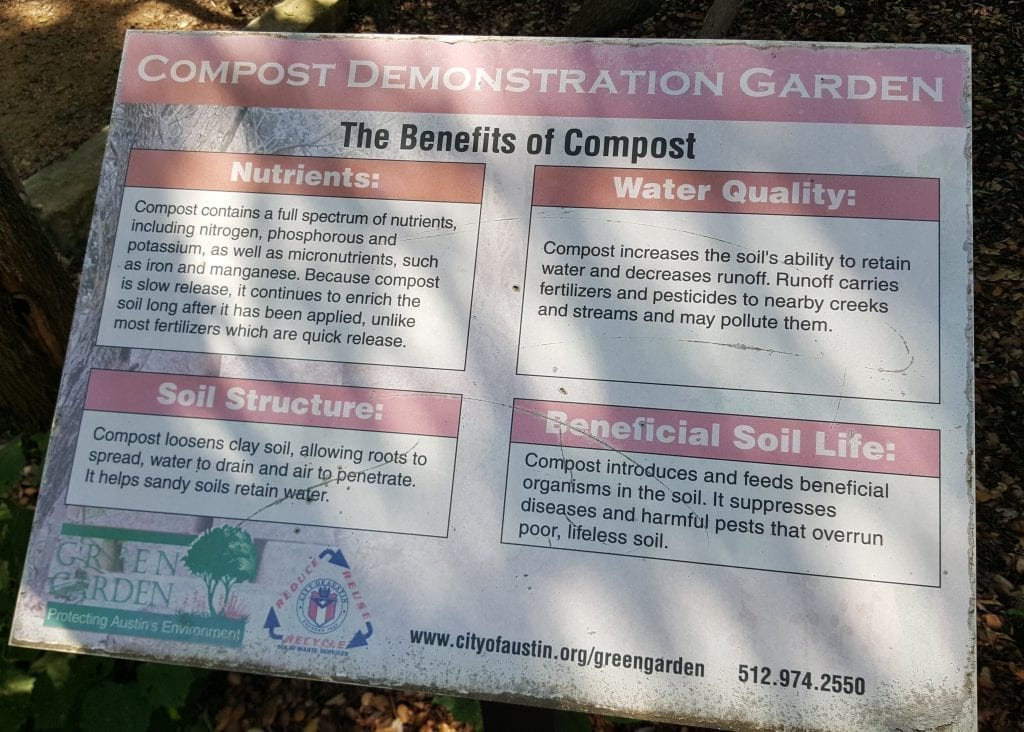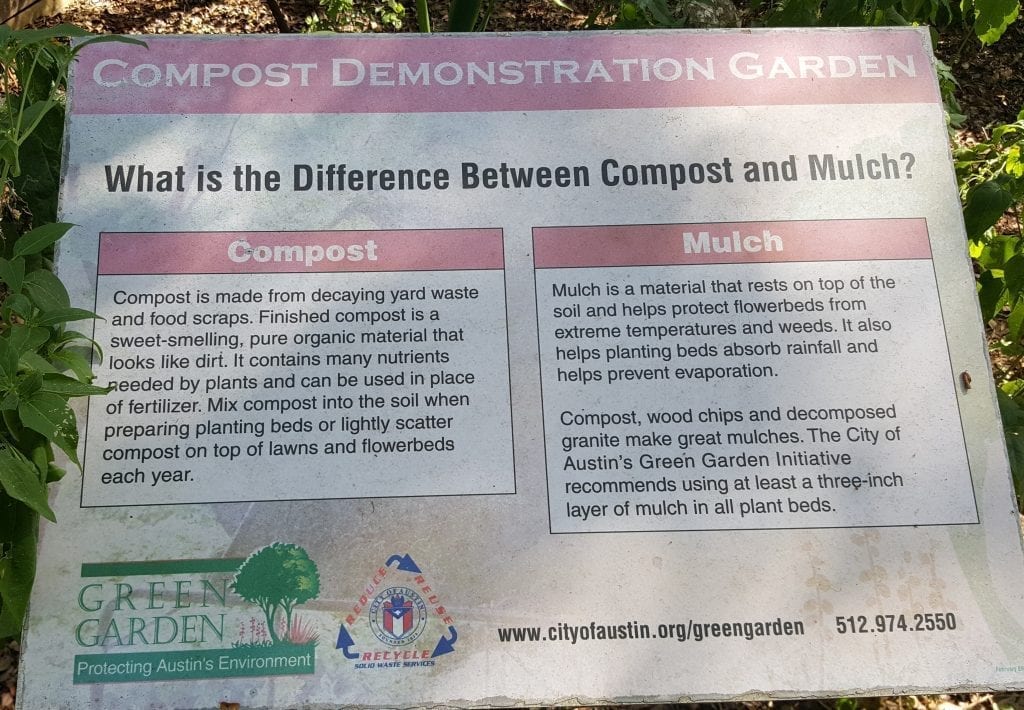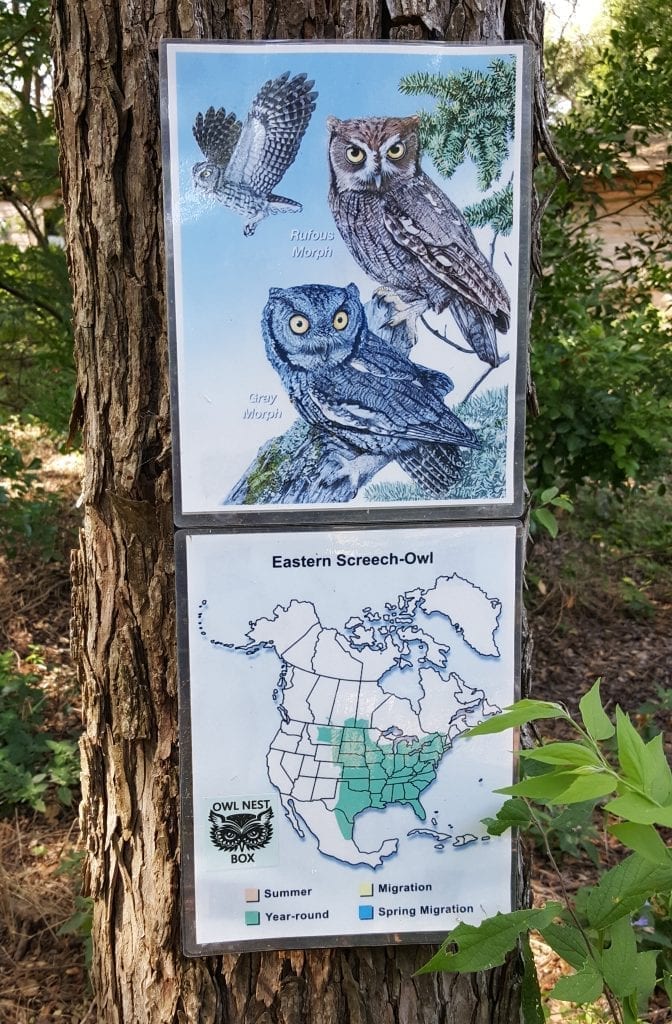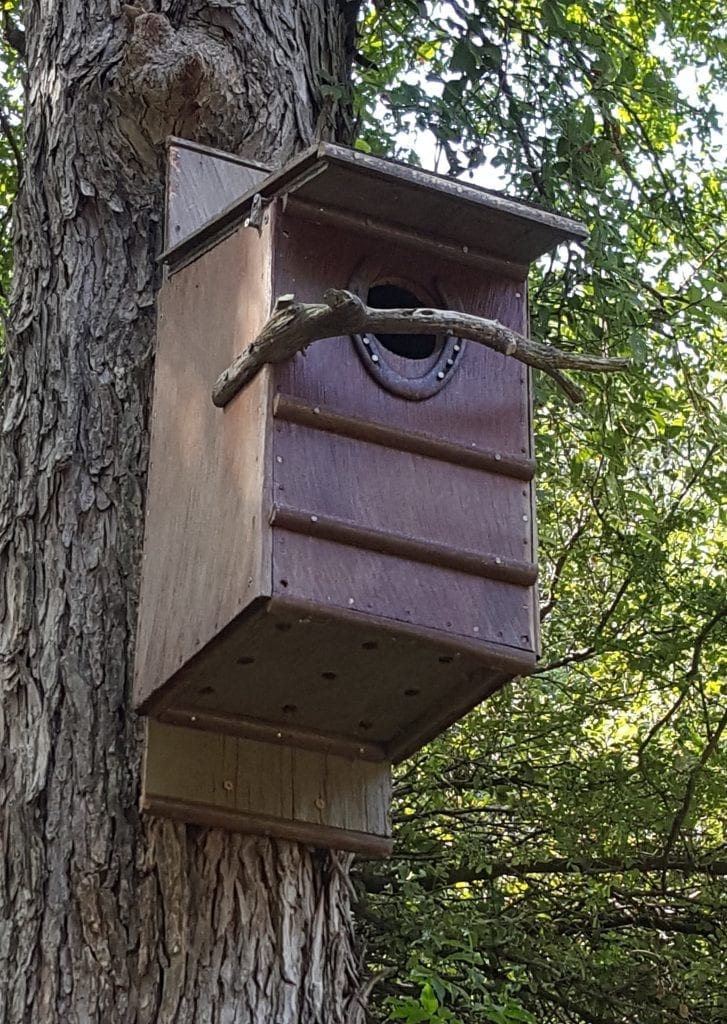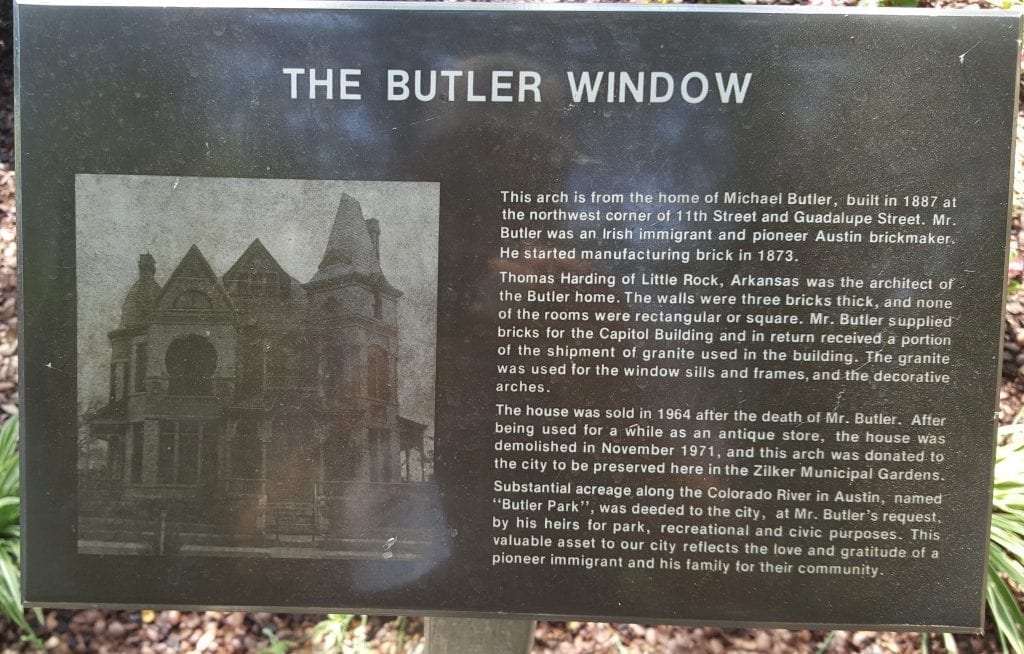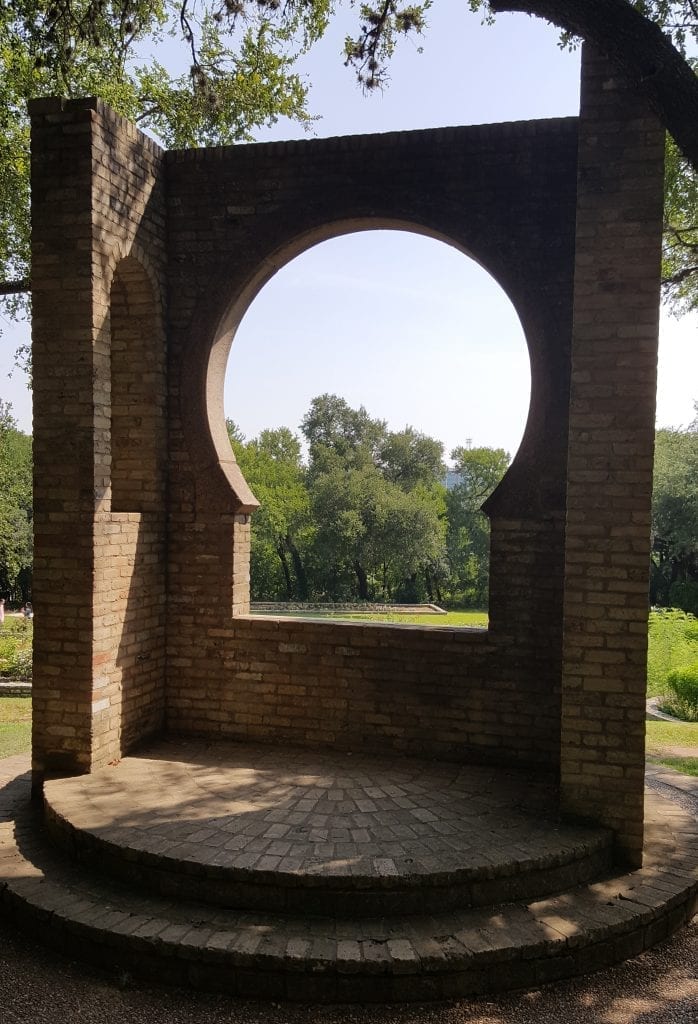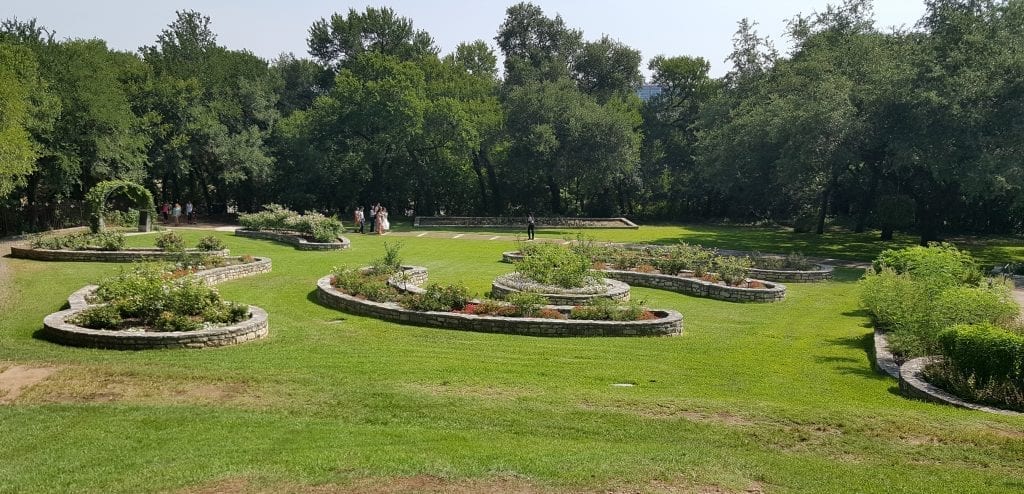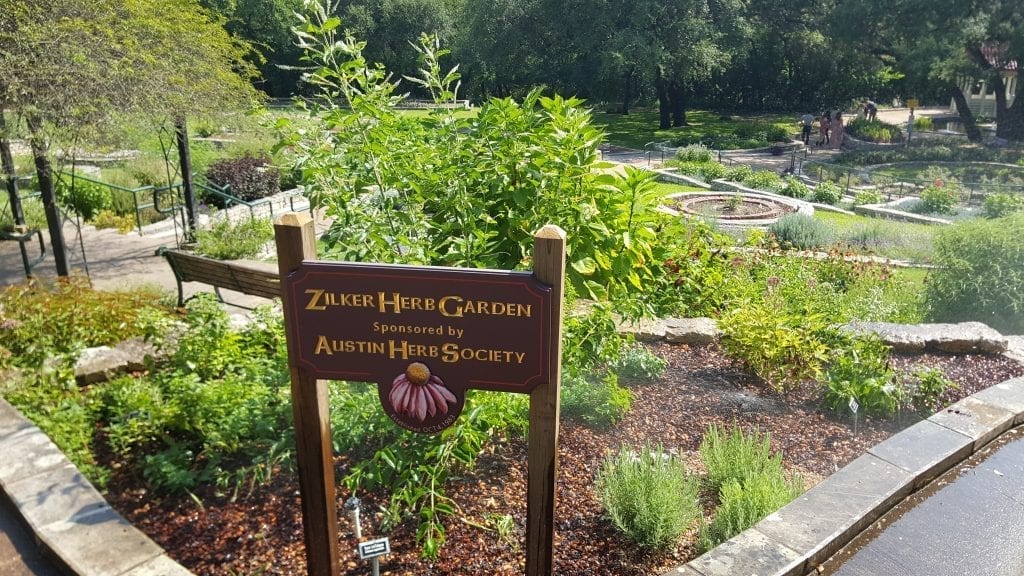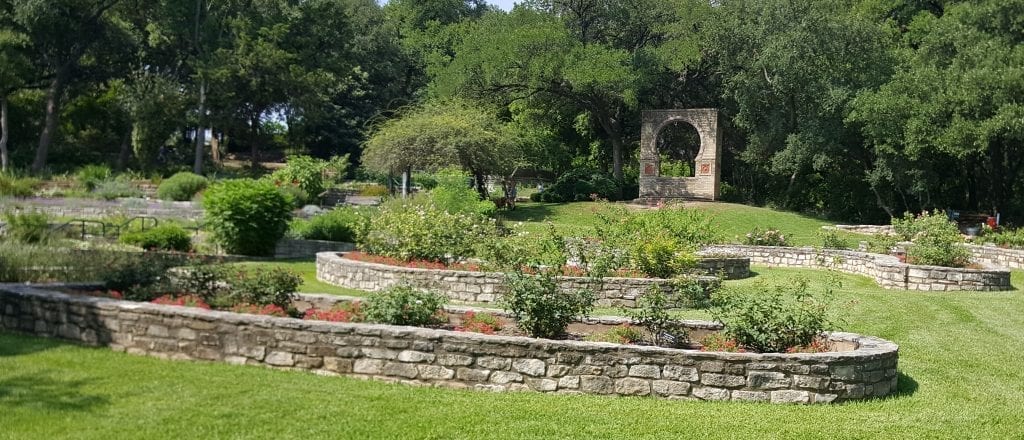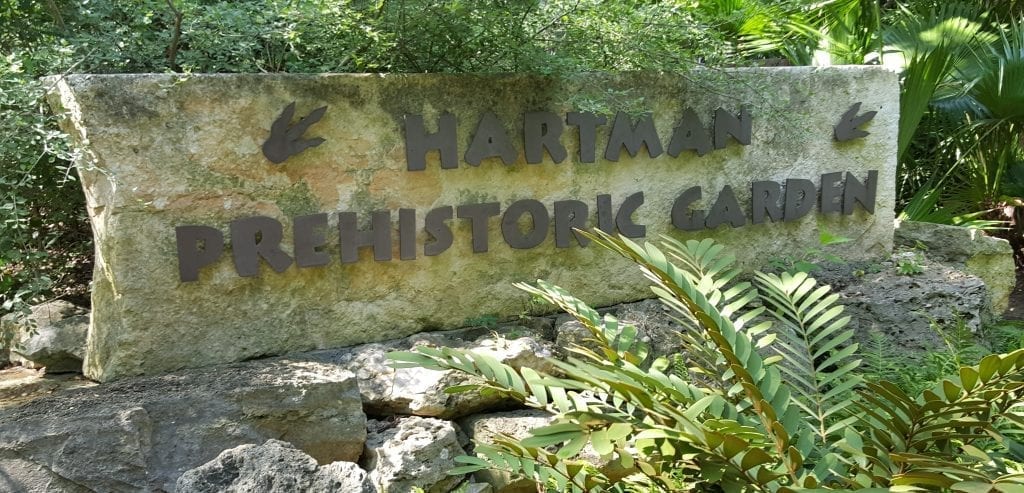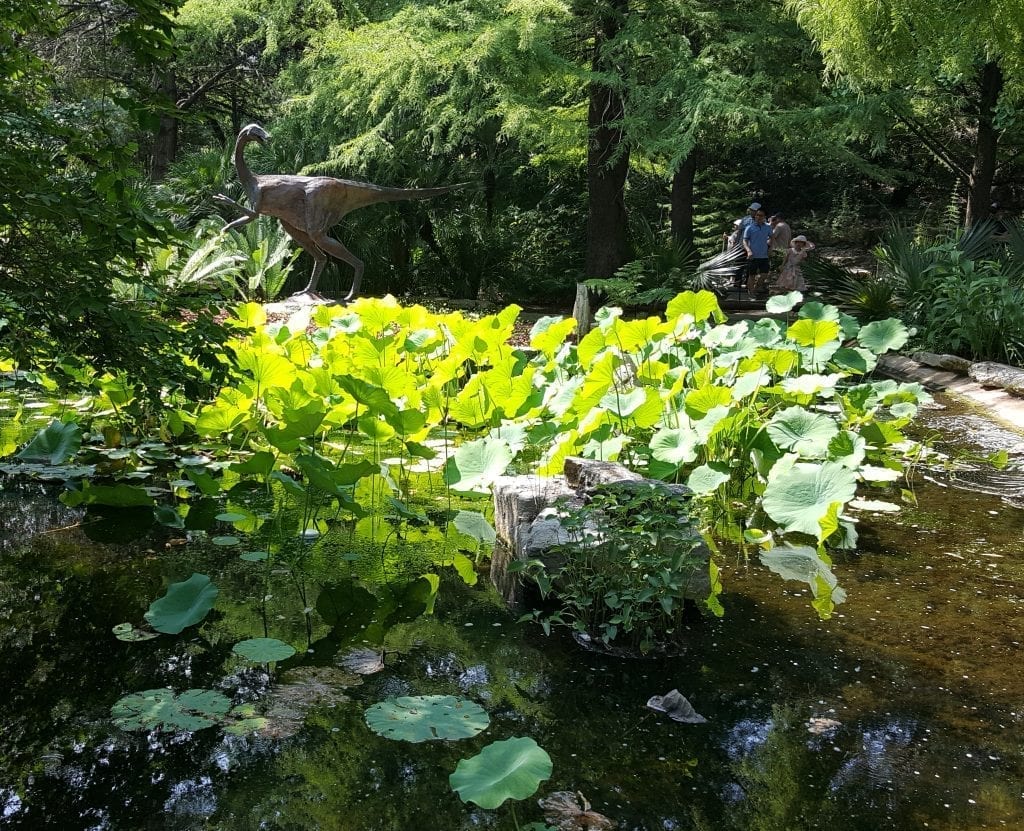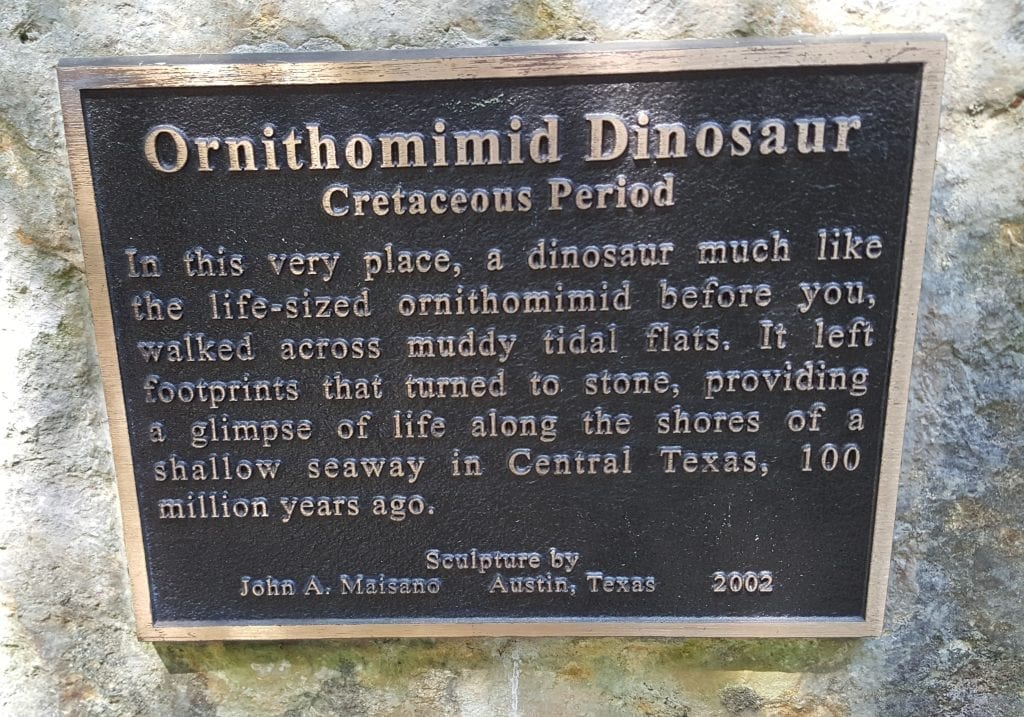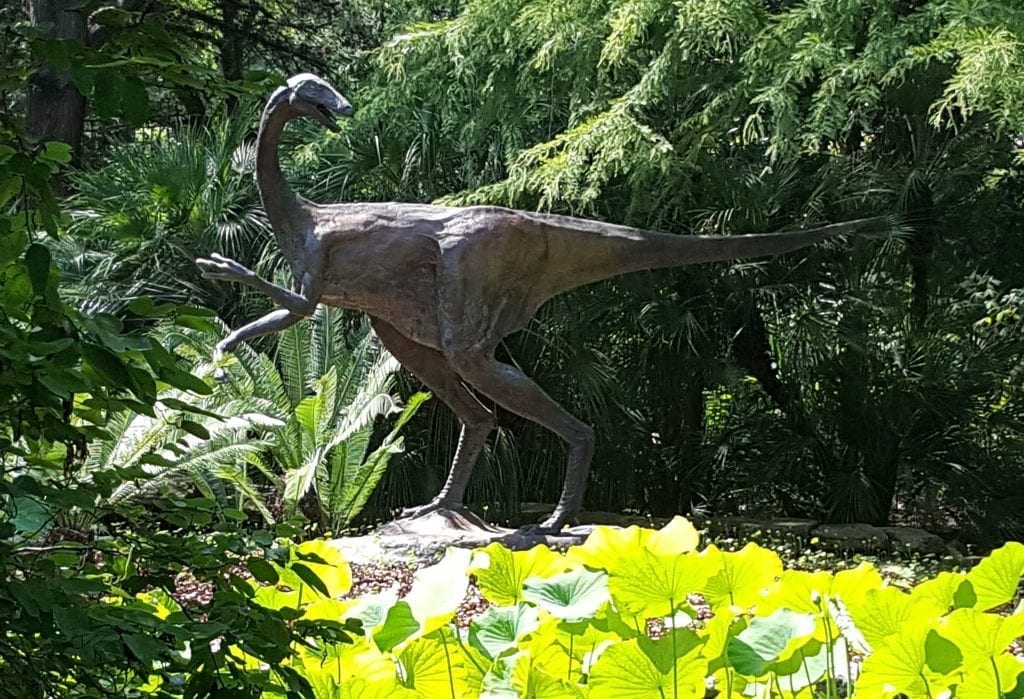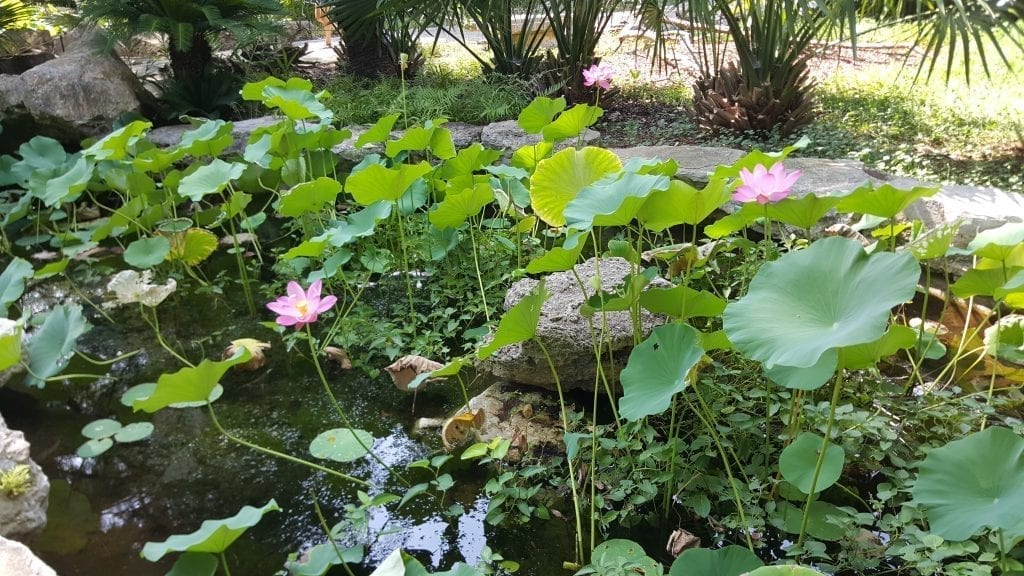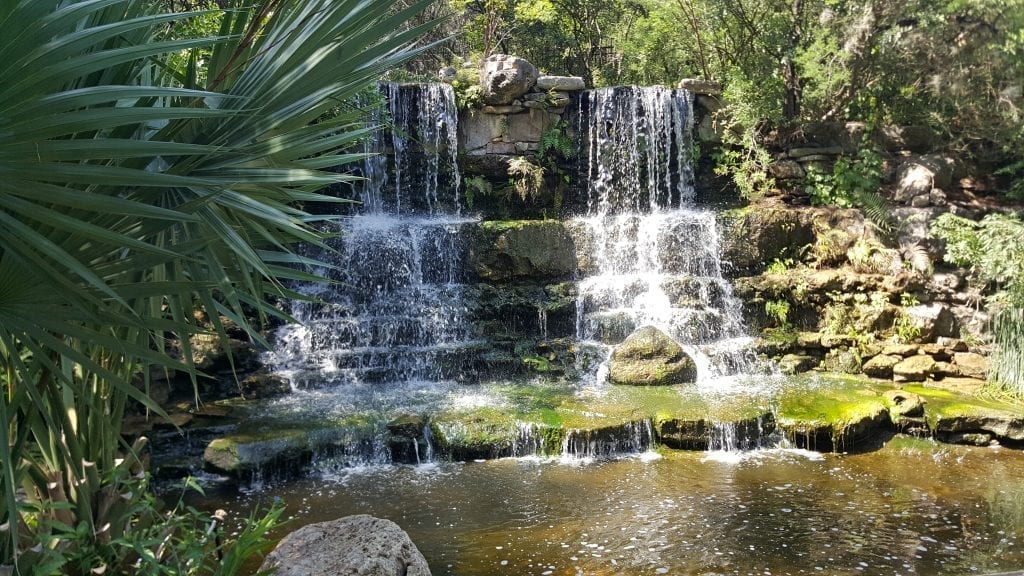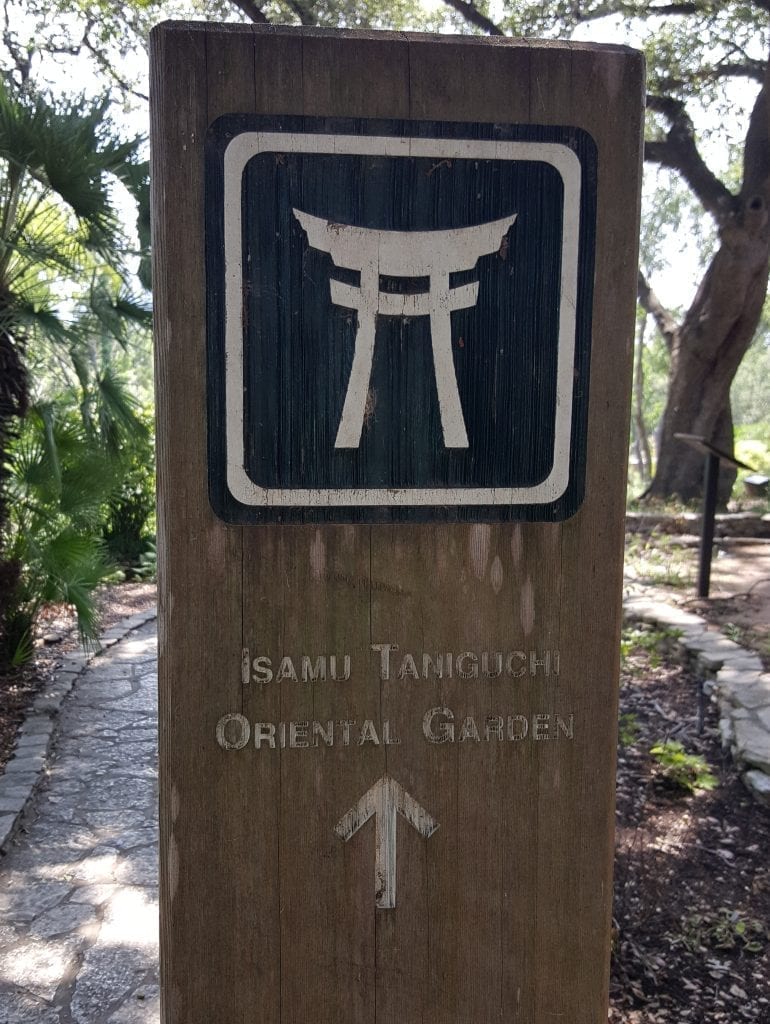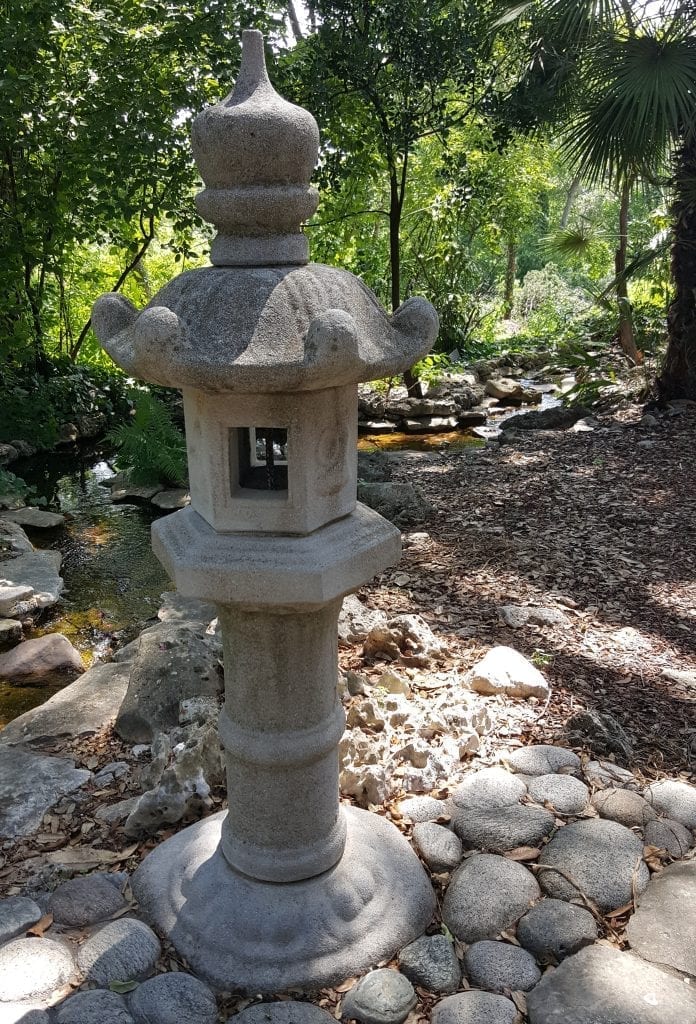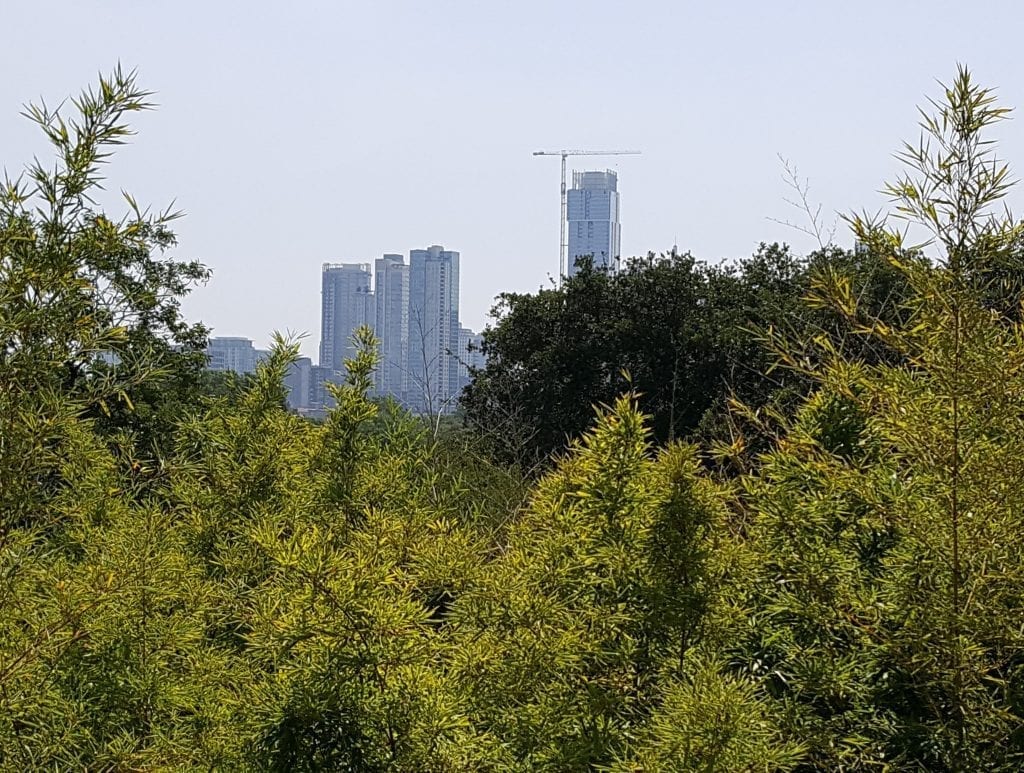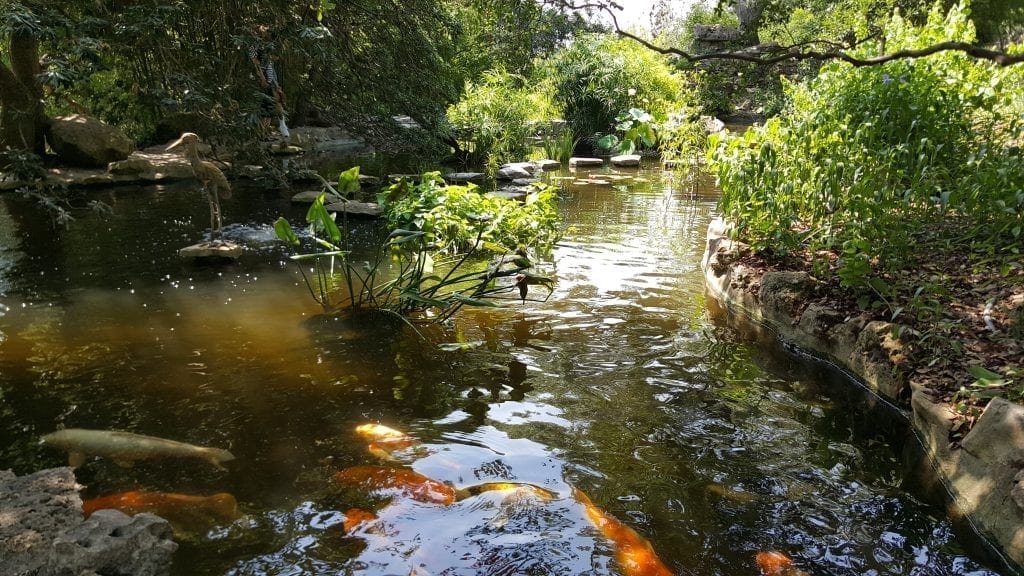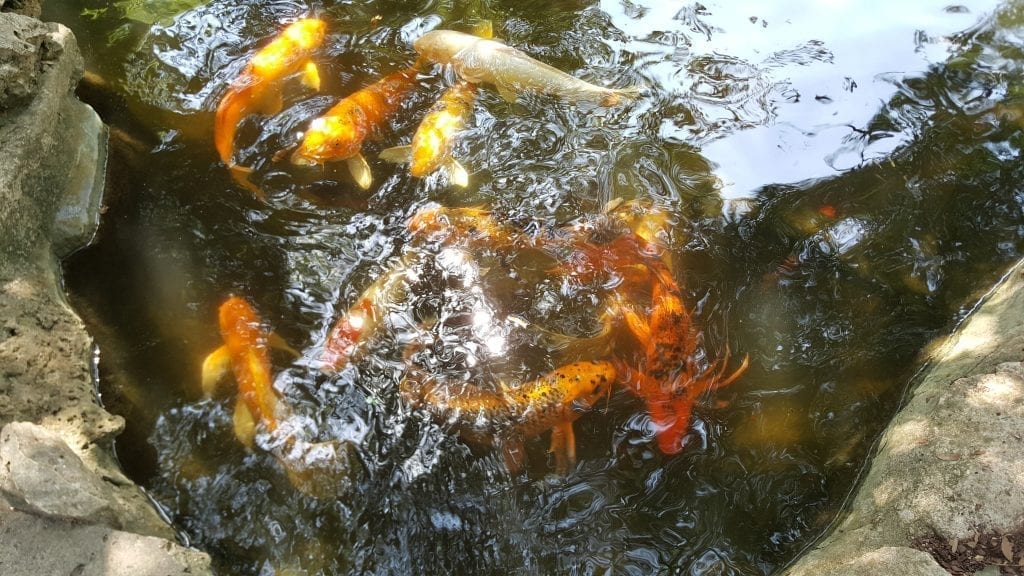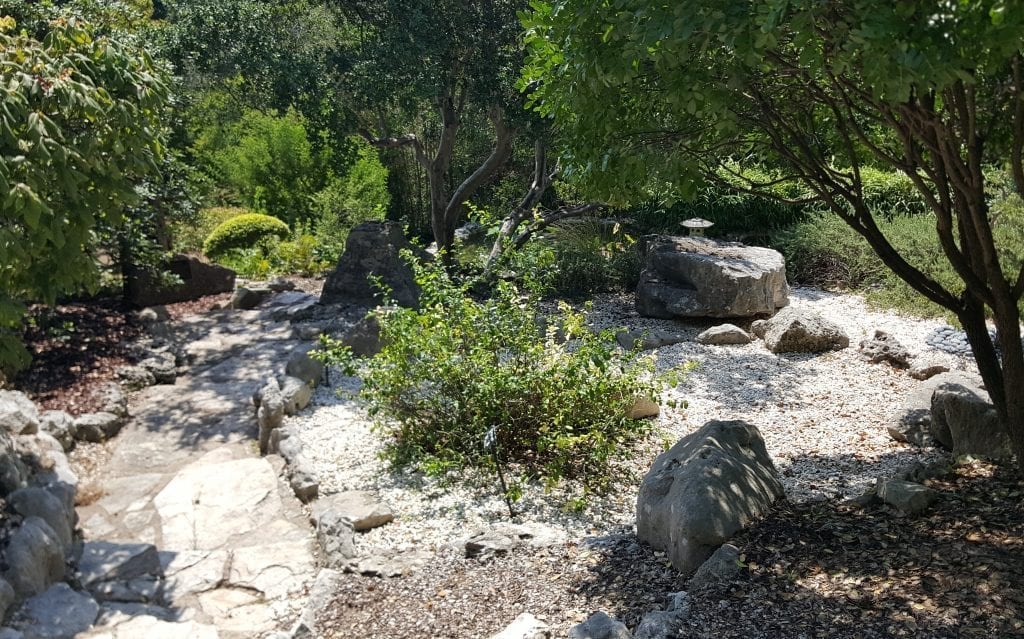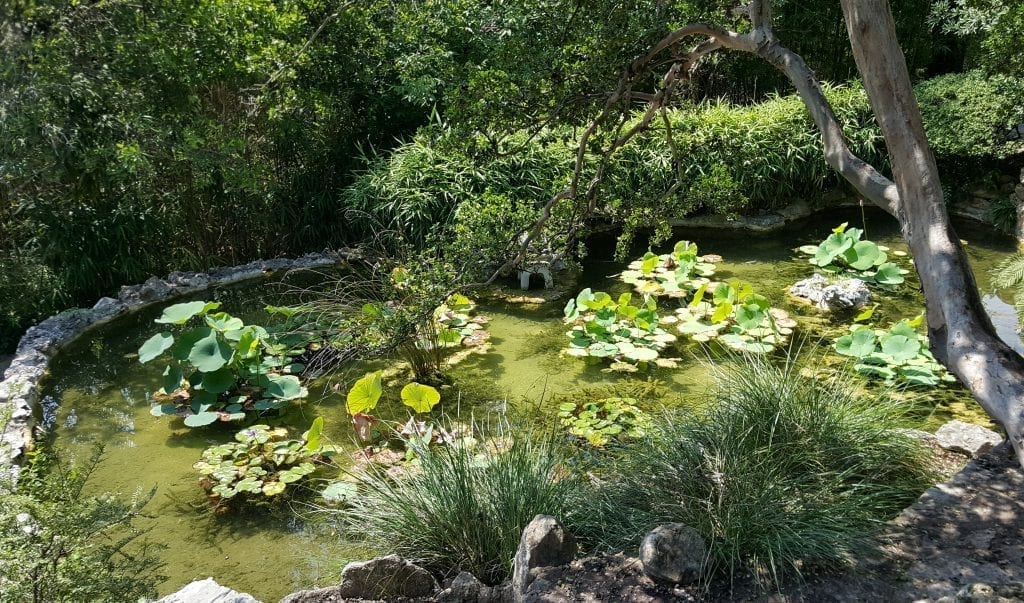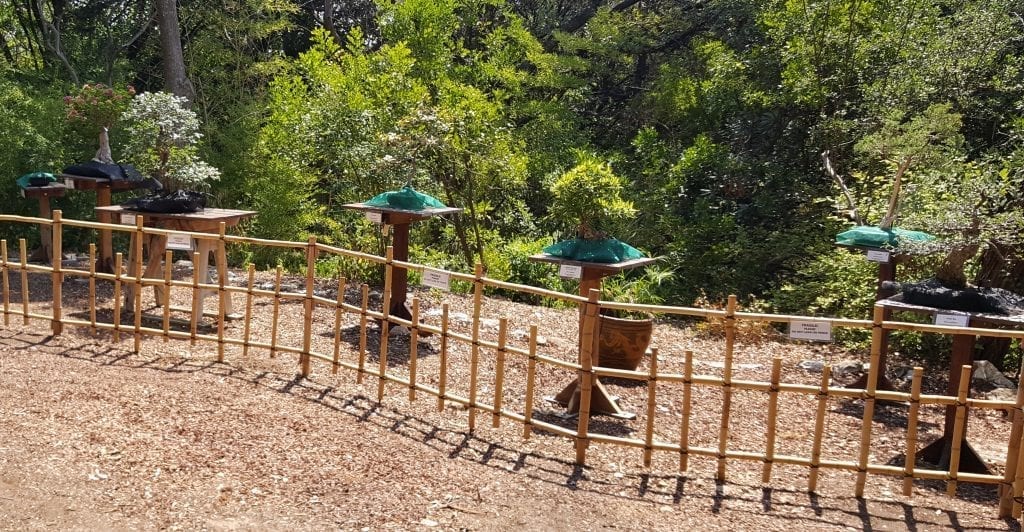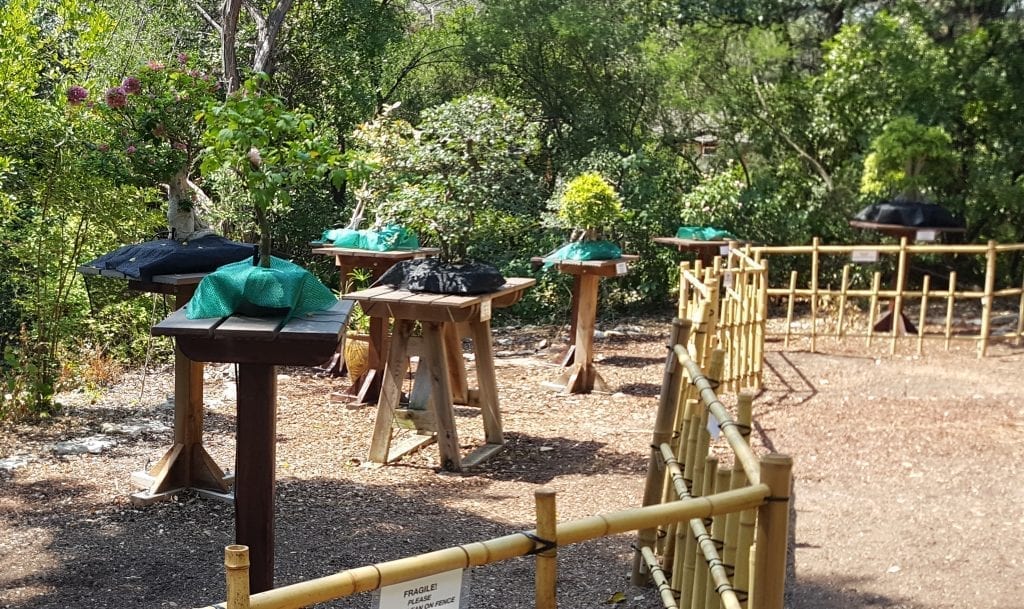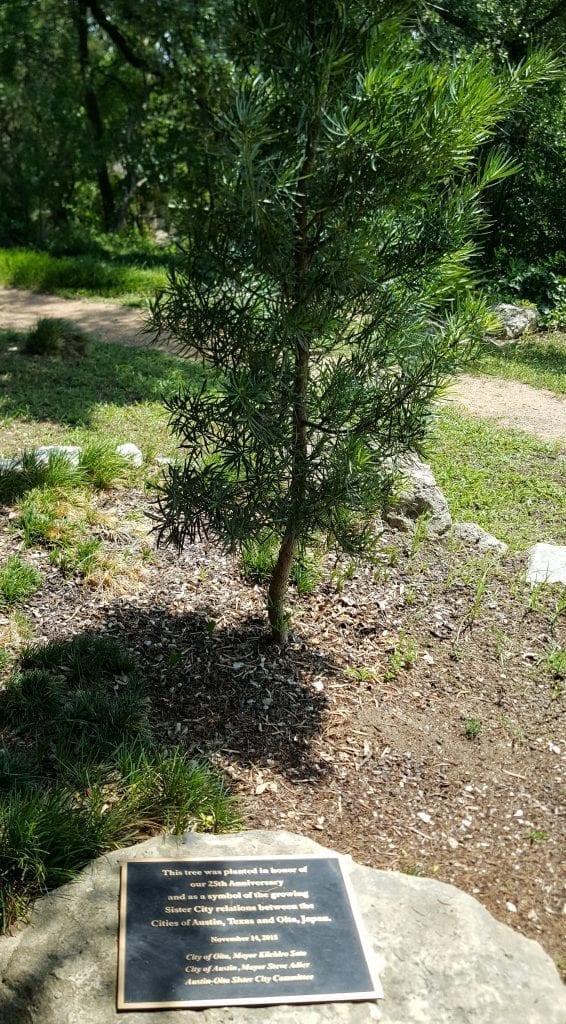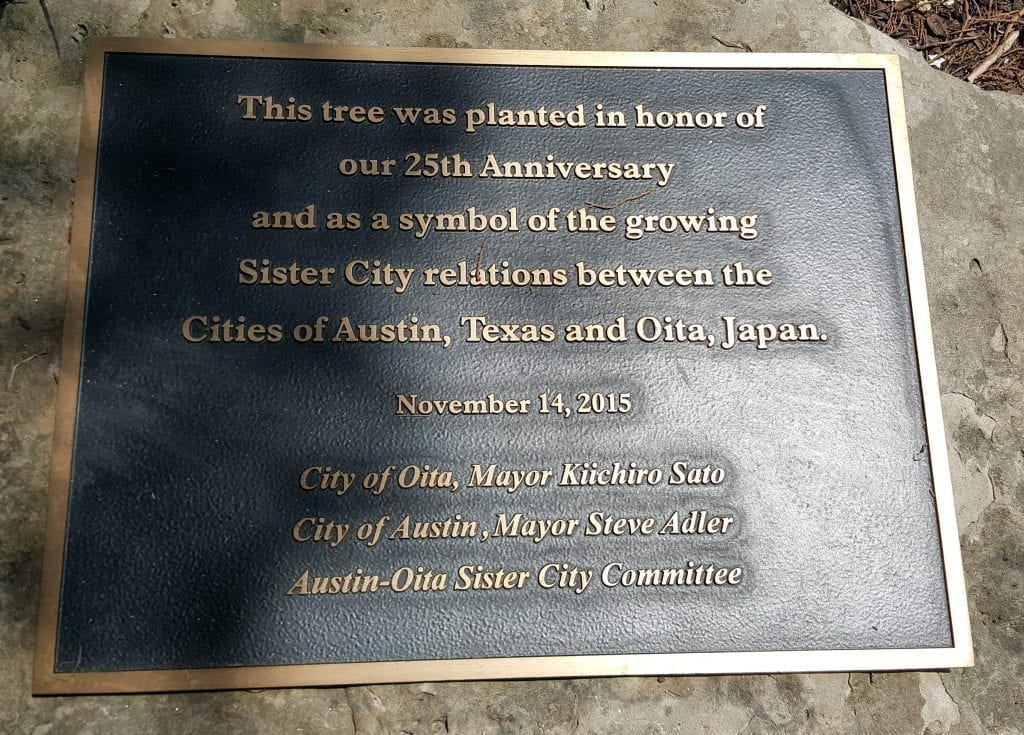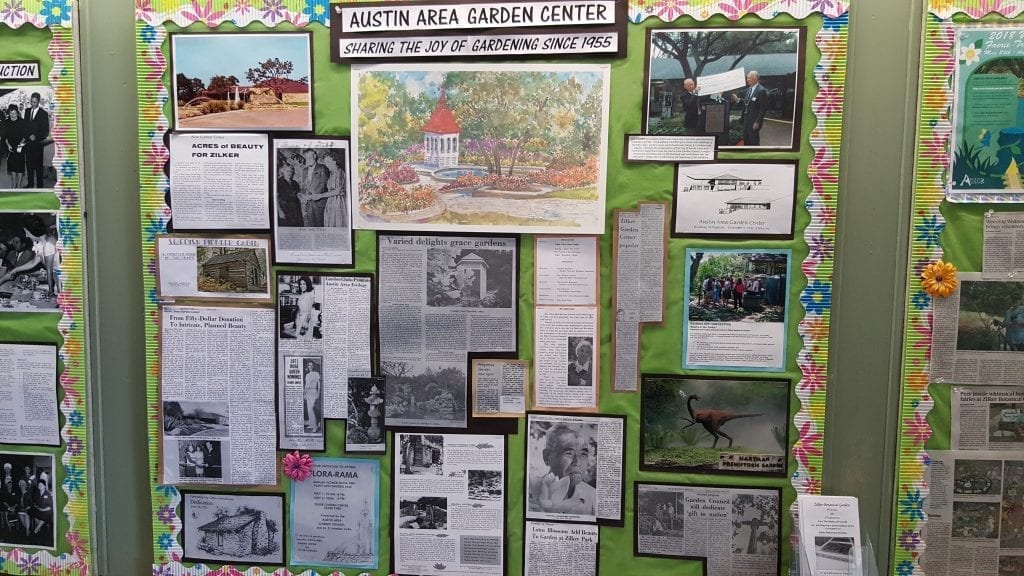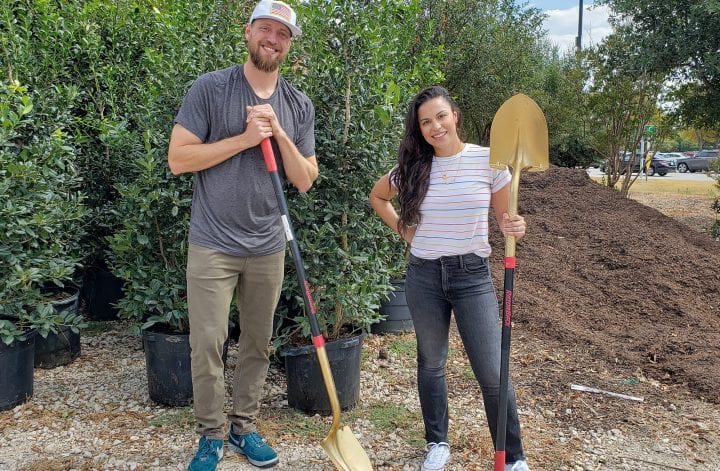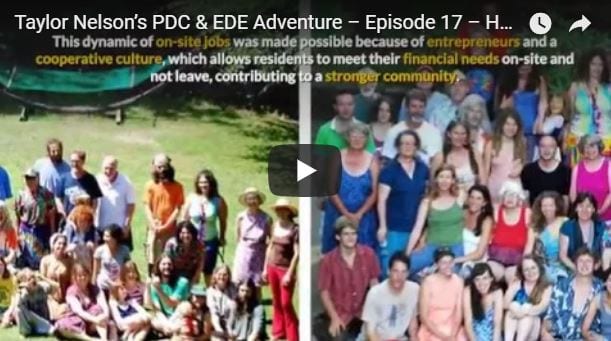Austin’s Zilker Botanical Garden Tour
The second week while I was in Austin, my grandparents returned home, so I went on excursions with my grandma. Our first planned stop was Zilker Botanical Garden (ZBG)in Austin’s Zilker Park!
My grandma took my adopted cousin there a few weeks beforehand to see the Woodland Faerie Trail, a seasonal feature built by residents and children along some of the garden paths, so grandma didn’t get to see the entire garden grounds and was excited to go with another one of her grandkids!
Below is a picture of the main offices, event space and visitor’s center for the garden grounds.
I also took a picture of the ZBG map, to show the various gardens and exhibits like the prehistoric garden, pioneer settlement, butterfly trail and garden, and the rose garden!
We started off in Shay’s Green Garden, which was closest to the parking lot and featured native and adaptive plants that could be adapted for home landscapes in Austin.
“Facing increased demand for water and measurable chemical impacts to our creeks and aquifer that are caused by landscaping practices, the City of Austin’s Green Garden demonstrates attractive, yet environmentally-sound, alternatives for Austinites. Featuring native and adapted plants, this garden showcases designs by nine different designers that can be adapted to the home landscape. Homeowners can learn which plants work well together and learn light and space requirements for each. Designs range from colorful, seasonal gardens, to traditional, evergreen styles, and a natural, wildlife habitat.
Major components of a Green Garden include:
- Austin-hardy plants (natives and adapteds) that require fewer pesticides and less water
- Appropriate turf varieties to limit water, maintenance and fertilizer needs
- Compost, and/or Dillo Dirt, to recycle waste products while providing nutrients
- Trees to reduce energy needs and improve air quality
- Don’t bag lawn clippings to reduce waste in the landfills and replenish nutrients to the lawn
- Reduce pavement to allow water to filter into the yard and avoid runoff to the street”
— Zilker Botanical Garden Webpage
The side of the sign in the middle of the garden outlined the various spaces/plots in this garden with their key features, like sun and shade tolerance, local native plants, and wildlife habitats.
On the second side of the middle sign display were plants in this garden space that were in bloom for better contextual reference for guests, and also featured the designers at the bottom.
The third side of the display sign outlined proactive tips and design considerations for people who want to plan and build their own gardens in the area. I think the “use Austin-hardy plants” is the best tip for anyone thinking about DIY gardening – which is why I assume it’s at the top of the list!
Here’s a picture of some of the Austin-hardy, heat and sun tolerant plants within the Green Garden.
Also in the Green Garden were various plaque diagrams like these two, highlighting specific designs and their requirements with best gardening tips. This one below is the “low maintenance shade” garden, followed by the “sun and color design” garden from the Grow Green website, including several other links to helpful flyers!
Walking from the Green Garden toward the main bulk of the garden exhibits, grandma and I passed this state of Texas rock statue at the drive-in entrance to ZBG, made with all local rocks!
On the far side of the parking lot was the Herb Garden, which was designed similar to a keyhole garden in a shape of a flower with a Saint statue in the middle to complete the design look.
“The Austin Herb Society maintains the Herb Garden at Zilker Botanical Gardens, which is located just west of the main entrance near Barton Springs Road. The original four-leaf clover design is comprised of raised beds and a variety of culinary, medicinal and landscape herbs.
Zilker’s prized Herb Garden continues to grow with a new expansion focusing on native plants. The added space has been christened the Vee Fowler Native Texas Herb Garden, named after long-time Herb Society member Vee Fowler, who continues to serve the herbal community in a variety of leadership roles.” — Zilker Botanical Garden Webpage
The statue “Rosemary, Goddess of Herbs” was sculpted by Mary Albrecht and set in place October 2000.
We continued our walk into the Oak Grove section of the gardens, which was a beautiful tree covered open space for events and letting pets run around. And because dogs are part of the Austin lifestyle, ZBG has a giant pooper scooper art statue reminding owners to pick up after their pets because pet waste can poo-llute the local water sheds.
“Dog and cat waste left on the ground is more than smelly and unsightly….it pollutes our water and poses a health risk for pets and people, especially children! Please remember to always Scoop the Poop and to dispose of pet waste properly!
It adds up! One pile of pet waste might not seem like a lot; however, more than 250,000 dogs live in Austin, generating 150,000 pounds of waste throughout the city every day.” — City of Austin Webpage
Also in the Oak Grove is a sizable fort for children that serves as an educational demonstration site!
One of the walls was built up with straw and natural plaster, and inside the fort were two laminated signs highlighting aspects of the building design and lashing construction!
Grandma and I turned the corner from the Oak Grove to the Woodland Faerie Trail, the seasonal exhibit built by kids depicting various fairy homes using natural and constructed materials and designs – as well as toys and kits, recycled bottles and pots, and mosaic bricks and marbles!
Passing through Faerie Trail, we came to the Butterfly Trail and Garden portion of ZBG. I was really impressed with the design of this garden, which incorporates the plants and shelter needed to be ordained a Monarch Waystation.
“Construction on the Douglas Blachly Butterfly Trail began in 1989-90 with a grant from Texas Botanical Garden Society board member Ruth Puett. The butterfly open-air hatchery garden was initiated by a donation from Curtis and Patricia Meadows. Butterfly GardenThe Butterfly Garden and Trail has been filled with local flowers and plants that attract numerous butterflies, providing visitors with a view of many of Austin’s attractive species as well as migrating varieties. Guided tours feature the interaction between insects and plants in an ecosystem.
During 2009-10, the original butterfly garden was revitalizated and enhanced through significant removal of invasive Japanese Ligustrum in many areas, native tree trimming to improve form and allow more light, irrigation work to improve function, and rock retaining walls built for two of the large beds on the trail. Plant identification signage was added with more to come. Along with those improvements, garden design principles that enhance color, form, and beauty that both butterflies and garden patrons can appreciate are being used to enhance the visitor experience and excite interest in a landscape type that also functions as a wildlife habitat.” — Zilker Botanical Garden Webpage
These are some of the butterflies that regularly pass through the Butterfly Garden!
Here’s a partial view of the Butterfly Garden, with the blacksmith shop in the background.
In addition to butterflies, ZBG had many other insect habitats spread through the grounds. This one in particular is a mason bee bug house, which is designed for these types of solitary bees that don’t build bee hives like many honey bees are known to do.
Another habitat design was the typical insect hotel, which attracts a variety of species depending on the type of materials bugs find attractive to use for shelter.
Here’s another view of the Butterfly garden, with a bubbling fountain in the middle of the garden!
Pioneer Village was what I explored next, this complex features a blacksmith shop with former tools and farming equipment, as well as a pioneer’s cabin and school house further up on the hill.
Right outside the blacksmith barn was a large iron kettle that served a variety of purposes throughout the United states, primarily for heating and extracting resources for natural materials.
“The Blacksmith Shop displays equipment needed to make and shape metal implements hand-forged by pioneer blacksmiths. Coal was used to heat the forge and a bellows to fan the fire red hot so metal could be worked on the anvil. Hand tools in various sizes and a leather apron worn for protection are also on display.” — Zilker Botanical Garden Webpage
“The Esperanza School House was built in 1866 in the Spicewood Springs area and served rural students’ needs until about 1873. Dr. and Mrs. F. E. Ingersol saved the building in 1962. With the support of the Parks and Recreation Department and local civic groups, it was moved to its present site and restored. Inside the schoolhouse one can see books, desks and benches used by students in the 1800’s.” — Zilker Botanical Garden Webpage
“The Swedish Pioneer Cabin was built about 1840 in Govalle by S. M. Swenson, the first Swedish settler who came to Texas in 1838. The cabin was the home of Swenson’s uncle until after the Civil War. Considered one of the best-preserved log cabins in the U.S., the cabin was moved to the Garden in 1965 by the Texas Swedish Pioneers Association, which also collected the authentic pioneer furnishings on view inside the structure.
The Wishing Well was donated by Mr. And Mrs. J. E. Hill in 1965. Mr. Hill was past President of the Garden Council and Chairman of the 1965 Flower Show.” — Zilker Botanical Garden Webpage
In the middle of the Pioneer Village is an organic garden demonstration site and composting area to show visitors various sustainable garden practices.
“The Organic Garden is planted with a changing display of economically important plants from around the world grown with traditional organic methods used by early pioneers.” — Zilker Botanical Garden Webpage
One of the specific garden demos was the bamboo trellis, which can grow a variety of vegetables for longer grow periods in concentration spaces while making harvesting more convenient.
Another garden demo was a Hugelkulture bed, which is an ancient mound gardening technique that uses woody debris to absorb and retain moisture, then breakdown to build soil fertility.
The final demo in the area was an herb spiral, generally an elevated circular tower for intensive growing of medicinal or culinary herbs. This on-site herb spiral was definitely mature and thriving with the large amount of overgrowth!
Off to the side of the organic garden is the compost demonstration garden, which had several forms of composting methods from open air piles to closed rotating barrels to highlight the various decomposition of organic materials. Also in this area were a few educational signs explaining the benefits of compost, and the difference between compost and mulch.
“A Composting Demonstration, sponsored by the City of Austin, shows different methods of recycling yard clippings and vegetable scraps into rich, organic material. Several types of composting bins are displayed.” — Zilker Botanical Garden Webpage
In addition to the bug habitats, there were several bird houses on-site – including owl houses like the one featured below that shelter a variety of screech owls native to the area!
We walked from the composting garden towards the Rose Garden, where we came across a large brick keyhole window structure overlooking the gardens. It was a nice framed view of the gardens below, and I learned this structure used to be a window in the home of a local Austin brick manufacturer and was eventually donated to ZBG.
“The Butler Window is from the home of brick manufacturer Michael Butler. The unusual key-shaped window was the focal point of the house built in 1887 at 309 West 11th Street and contains granite used in the construction of the Capitol. The window was donated to the Garden Center in 1971 when the house was demolished.” — Zilker Botanical Garden
This is a view from the Butler Window down into the rose garden, where you can see a wedding photo shoot on the far pathway leading into the prehistoric gardens.
A few steps from the Butler Window down the path, I stood at the top of the Rose Garden overlooking the ADA wheel-chair accessible path that zig-zagged through the garden.
“Dedicated in April of 1973, this garden was enlarged in 1987 and offers a display of labeled shrub and climbing roses, which are at their peak of beauty April to June and again in October. Mrs. Alden (Mabel) Davis helped organize the Austin Area Garden Center and served as the Center’s first President.
Overlooking the expanse of the Rose Garden, the Bickler Cupola originally topped one of the first public schools in Austin, which was constructed in 1894 on the corner of East Avenue and 11th Street. It was renamed in 1902 to honor a pioneer educator, Jacob Bickler. In 1947 the building was converted into an administrative building for A.I.S.D. When the building was demolished in 1968, the school district donated the cupola to the city.” — Zilker Botanical Garden Webpage
Another view of the Rose Garden from the bottom of the hill, looking up at the Butler Window.
We followed the path into the Hartman Prehistoric Garden, a special garden exhibit that featured plants resembling those that grew during the Cretaceous period, like ferns and palms. What was also pretty cool about this area were the dinosaur and fossil imprints on the sidewalks and the statue of a Ornithomimus, that left the foot prints on the pathways.
“In 1992, amateur paleontologists discovered dinosaurs once roamed the grounds of Zilker Botanical Garden. More than 100 tracks made by six or seven reptiles along with the bones of an ancient turtle were found. Location and accessibility made this discovery a particularly significant find.
Thanks to contributions from major donors, in-kind gifts, a major fund drive and volunteer efforts by Austin Area Garden Council members, this two-acre site has been developed as a Cretaceous habitat.
Plants in the garden represent the types that existed at the time of the dinosaurs. These are the spore producing plants (ferns, horsetails and liverworts), the gymnosperms (cycads, conifers and ginkgos) and the first angiosperms (magnolias and palms).” — Zilker Botanical Garden Webpage
“The life-size sculpture on Dino Island is an Ornithomimus (Greek for “bird-mimic”), the dinosaur that left tracks of its three toed feet in the gardens. The Ornithomimus is one of a group of medium-size elongated dinosaurs that lived in North America during the late Cretaceous period, 97 to 65 million years ago.
Scientists believe this dinosaur was fast, traveling as much as 40 miles per hour. The Ornithomimus in motion would have looked much like the gait or stride of an ostrich or emu. Approximately 8 feet long, it had a larger brain (for its size) than most dinosaurs. Ornithomimus is thought to have lived on a diet of plants, insects, eggs and small animal prey because of its relatively small teeth and three-fingered forepaws.” — Zilker Botanical Garden Webpage
“During the Cretaceous period (144 to 65 million years ago), flowering plants evolved as well as a great variety of insects. Dragonflies, butterflies and other insects co-evolved with plants providing more effective pollination.
This garden includes examples of the more primitive angiosperm families (magnolias, dogwoods, witch hazel, laurel, palms and birches). These are set amidst a backdrop of plants originating from the Jurassic period– conifers, liverworts, mosses, horse-tails, ferns and cycads.
An assortment of small reptiles and fish add to the prehistoric ambiance of the Hartman Garden. The moat around Dino Island is stocked with gar, an ancient type of fish that has survived to this day.” — Zilker Botanical Garden Webpage
We circled back to the main center to go through the Isamu Taniguchi Japanese Garden.
“Opened to the public in 1969, the Garden was built by Isamu Taniguchi when he was seventy years old. Working without a salary or a contract, Mr. Taniguchi spent 18 months transforming 3 acres of rugged caliche hillside into a peaceful garden. As is often done in Japan, the ponds were designed in the shape of a word or ideogram. In this case, the ponds in the first half of the garden spell out the word “AUSTIN”, reflecting the fact that these gardens were constructed as a gift to the city. The remains of the Mother Tree, which inspired Mr. Taniguchi to complete his building of the garden, overlooks the pond.” — Zilker Botanical Garden Webpage
Walking through the bamboo forest, I could see the downtown Austin skyscrapers just above the bamboo canopy. A real contrast of the remaining nature of Austin against the continued construction of the city.
“The second pond, which contains numerous koi and our own resident water snake, is also symbolic. In designing it, Mr. Taniguchi envisioned a boat, with a sail, a gangplank and an anchor and chain. You can walk the gangplank to the boat. A large Wisteria forms the sail and the stepping stones will lead you down the chain and anchor.” — Zilker Botanical Garden Webpage
My grandma had to take a break and cool down, so she headed back to the main center to rest, so I continued walking through the Japanese Gardens – exploring the various rock outcroppings and elevated ponds Mr. Taniguchi designed into the dynamic landscape.
This is one of the higher Lilly ponds that catches rain and feeds into the lower ponds to replenish the water levels seasonally!
At the far edge of the Japanese Garden was the bonsai collection situated behind a traditional Japanese bamboo fence. I thought the display was very interesting with the trees featured on individual peddle-stools, signifying the importance and individuality of each plant.
I made my way from the Bonsai collection back towards the main center to meet up with my grandma, and passed this commemorative tree planted for the garden’s 25th anniversary and as a symbol for Austin’s sister city in Oita, Japan.
I met my grandma in the main center and passed this events and news article board, which highlighted upcoming events and classes, as well as news articles about Zilker Botanical Gardens!
Insights
I really enjoyed walking through the diverse garden exhibits of Zilker Botanical Gardens, especially learning how they push information educational information relevant to local Austin issues, like restricted water from city growth and the general environment, ideal native and adaptive plants that thrive in the environment, and sustainable practices to conserve resources like composting and water conservation.
In addition to the educational aspect of the gardens, it was really refreshing to see historical and cultural aspects of the gardens from the Cretaceous time period to pioneer cultures to Japanese garden designs.
Overall, seeing Zilker Botanical Gardens really tied in with my considerations for landscape architecture – building sustainable, people-friendly spaces for the community!
Resources
- Zilker Botanical Gardens Webpage
- Zilker Botanical Gardens Facebook
- Zilker Gardens Festival Webpage
- City of Austin – Zilker Botanical Gardens Webpage (Resources)
- City of Austin – Scoop the Poop Webpage
Articles
- Find Romance Among the Roses at Austin’s Zilker Botanical Garden – DatingAdvice Article
- Zilker Botanical Garden: Budget-Friendly Outing For Families – Free Fun in Austin Article
- Want to sip and stroll through Zilker Botanical Garden at twilight? Here’s your chance – Austin360 Article
- Dog Friendly: Zilker Botanical Garden in Austin – Go Pet Friendly Blog
- Austin Parks Department Plans Makeover for Zilker Botanical Garden – Austin Towers Article
- Know the 6 D’s of container gardening before you get planting this fall – My Statesman Article
- Uncover the history of this Japanese garden hidden in the heart of Austin – CultureMap Austin Article

